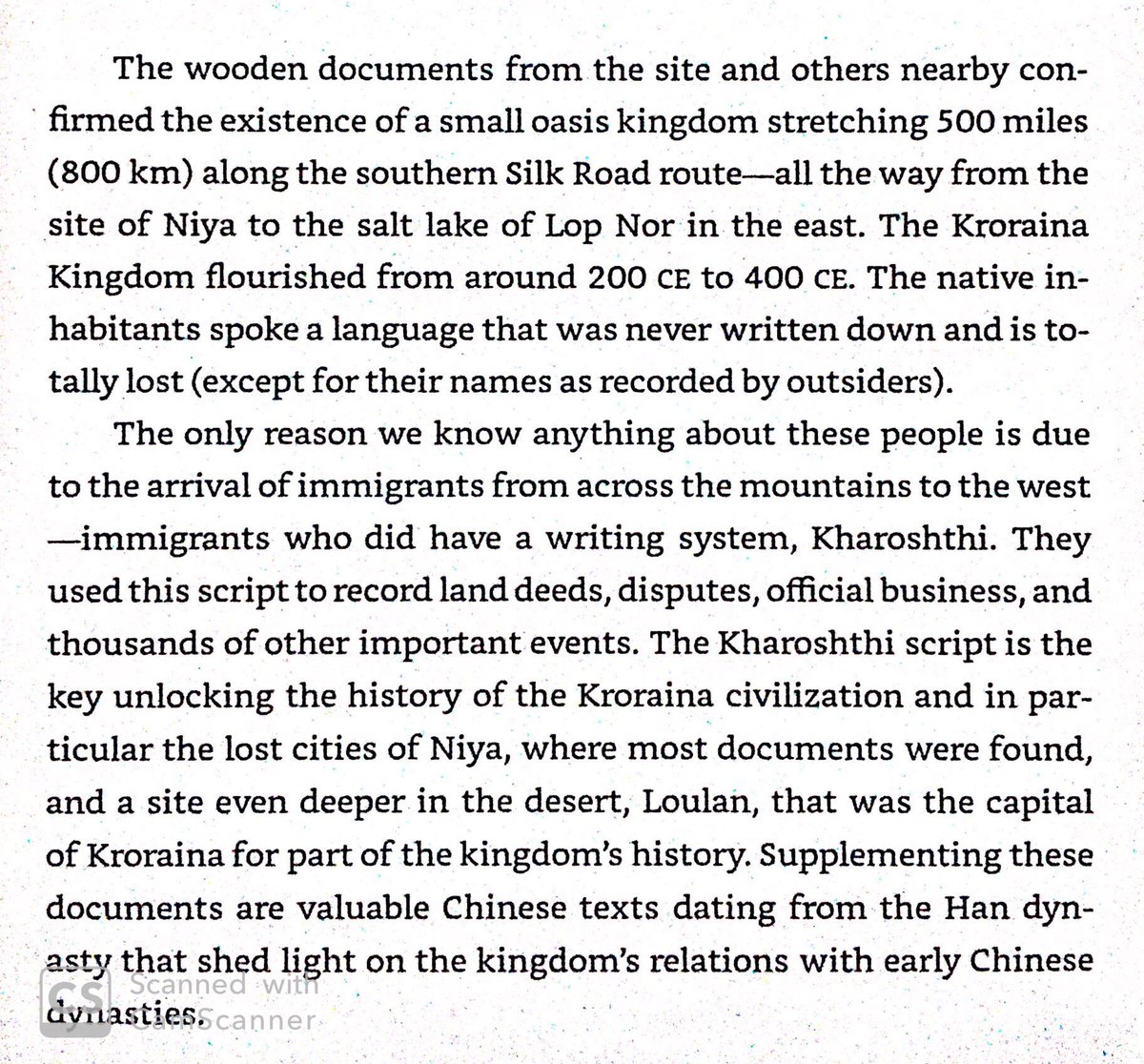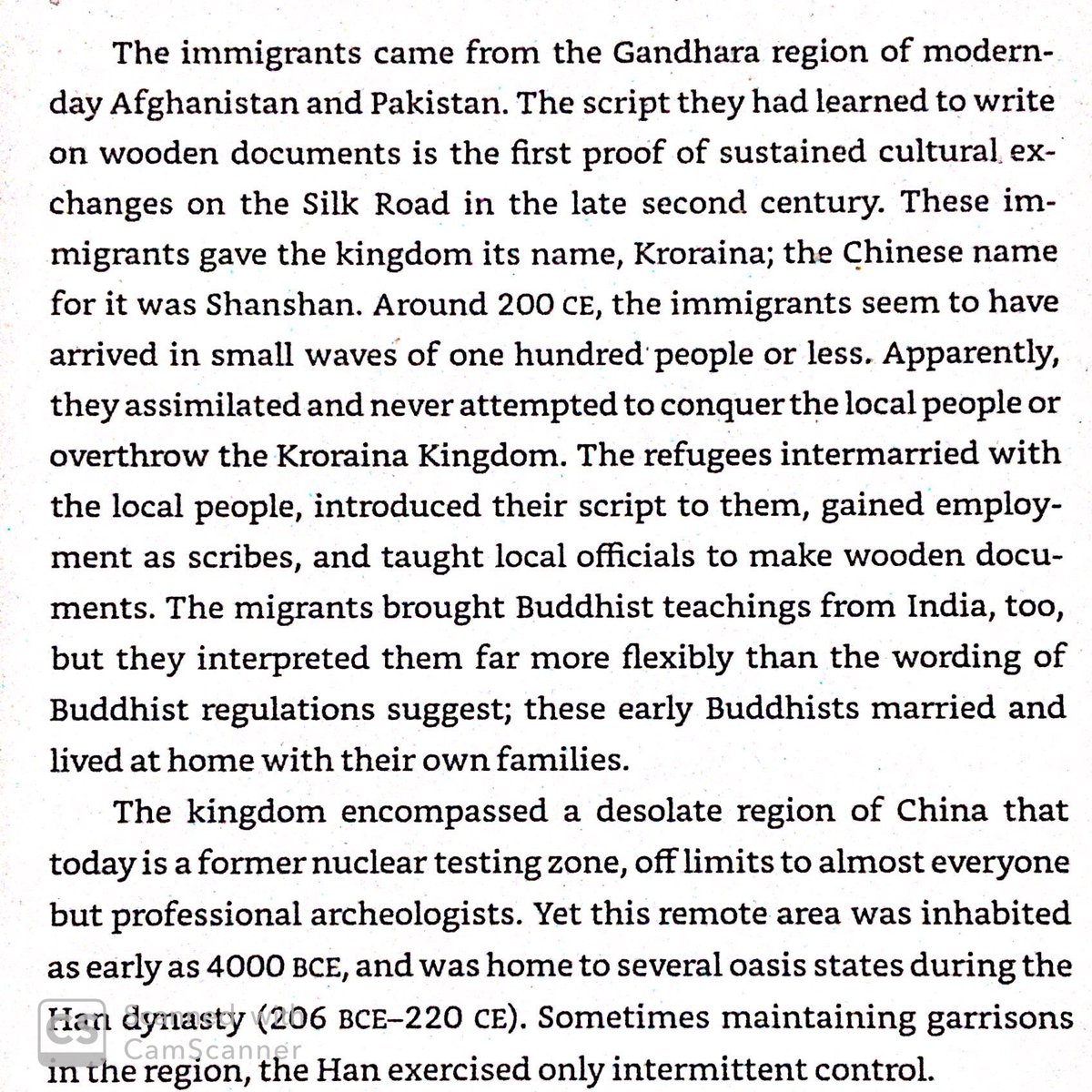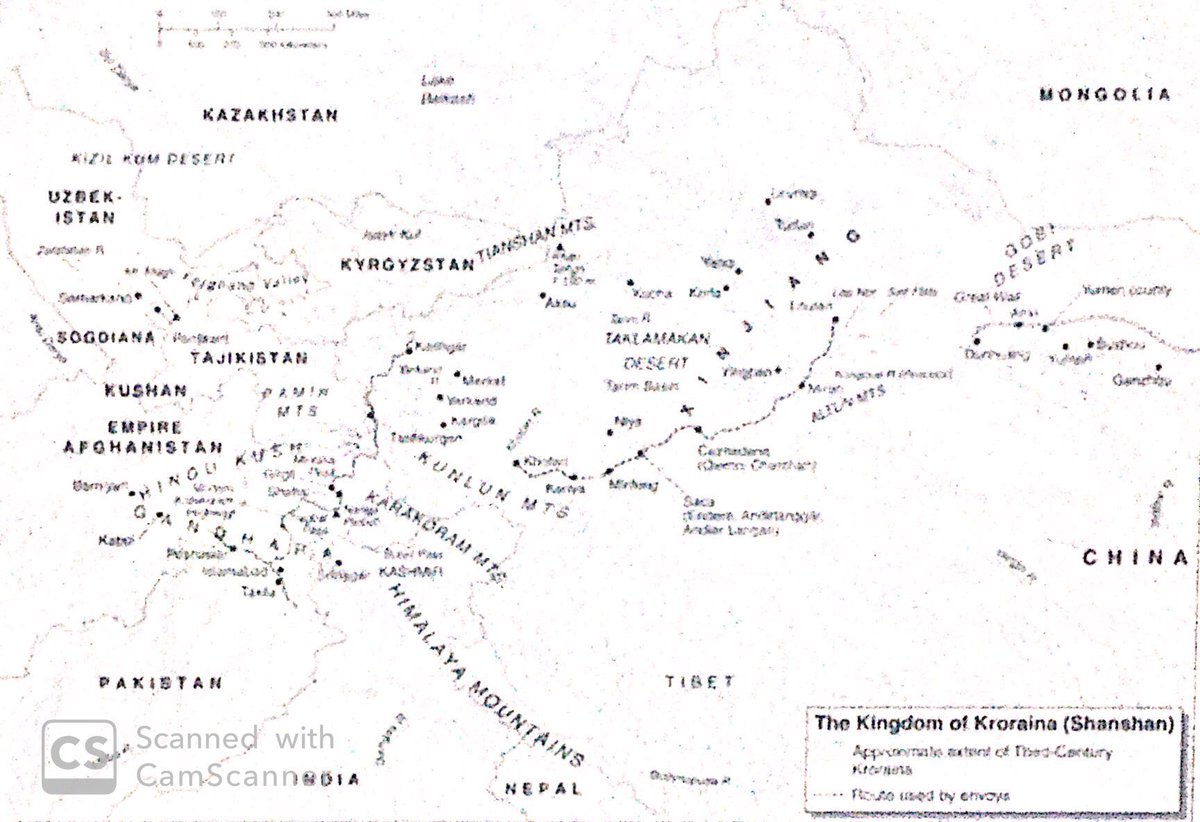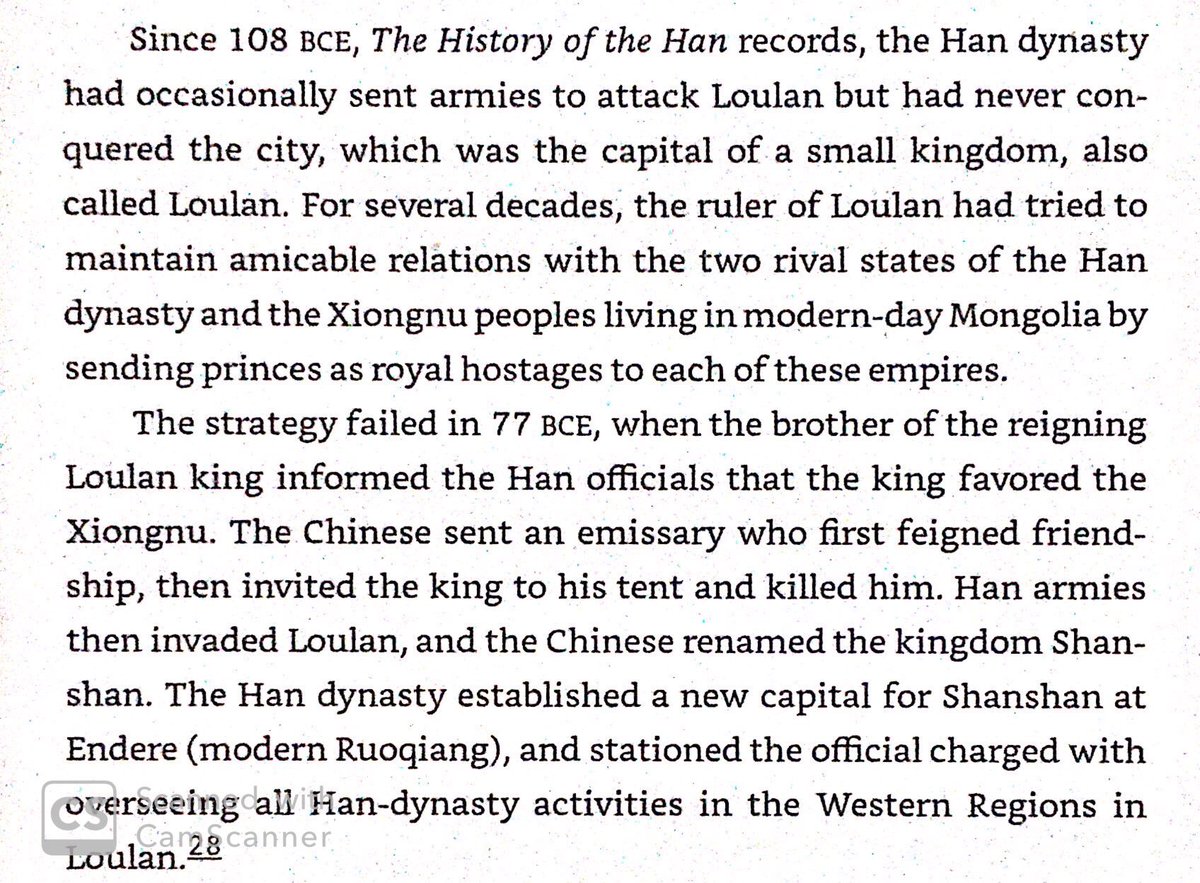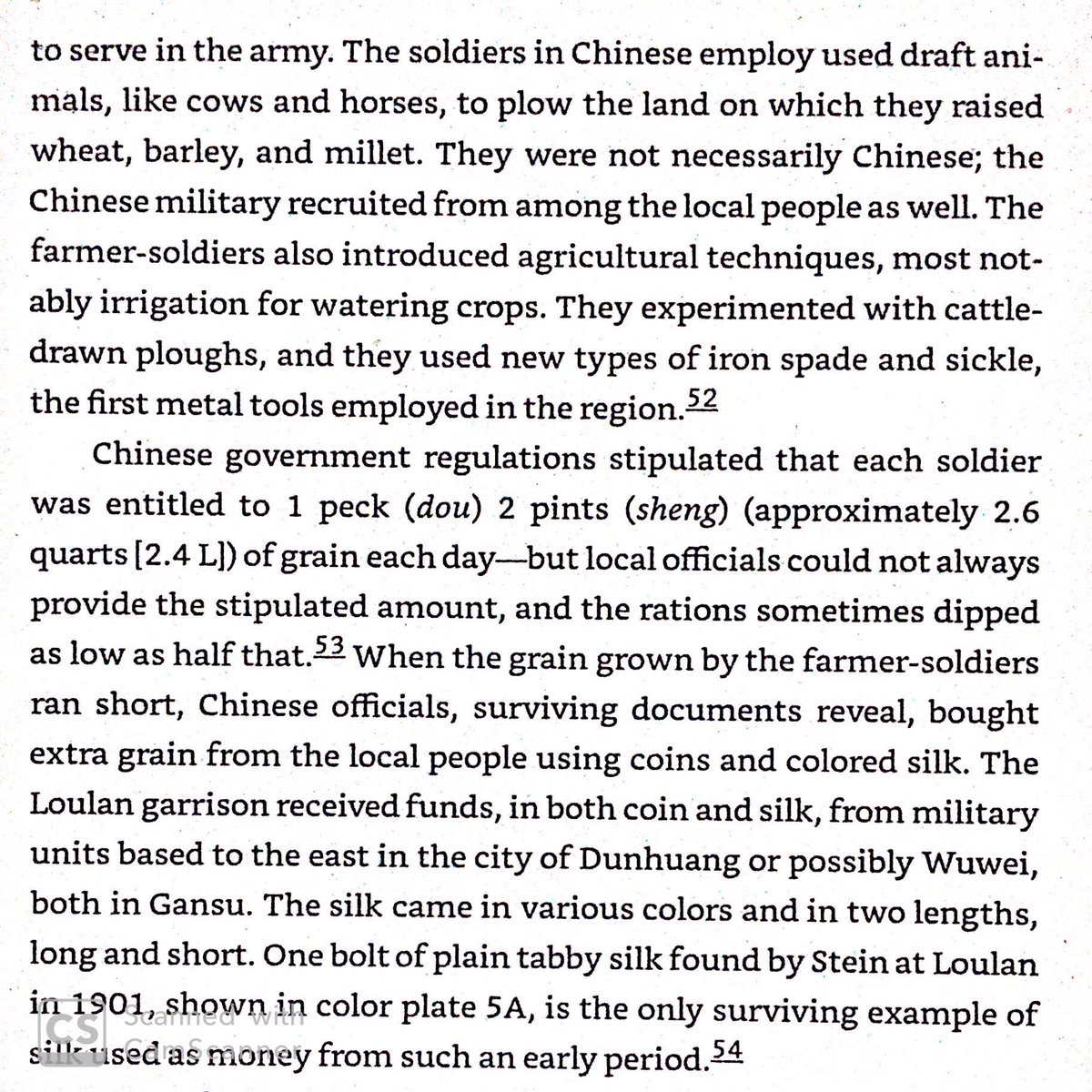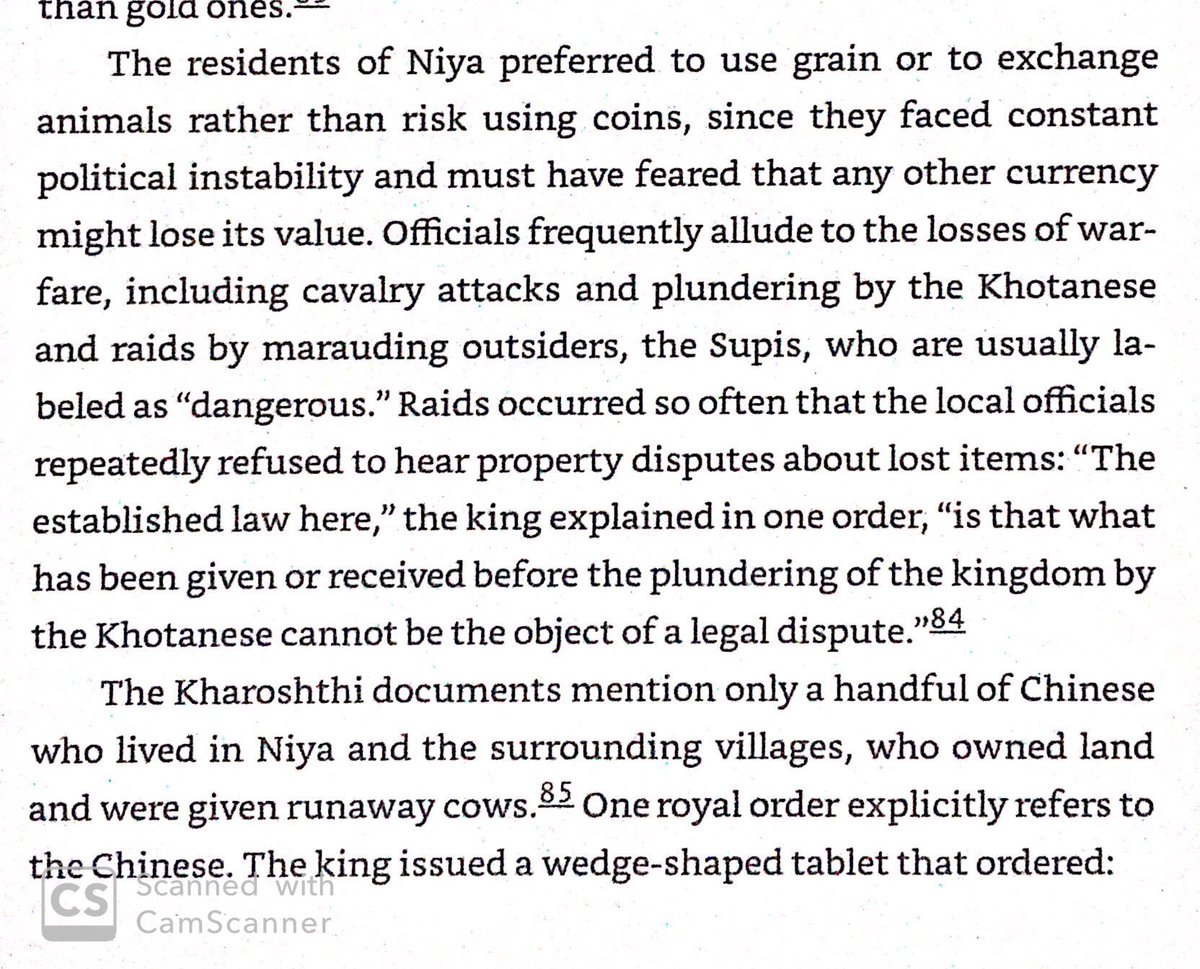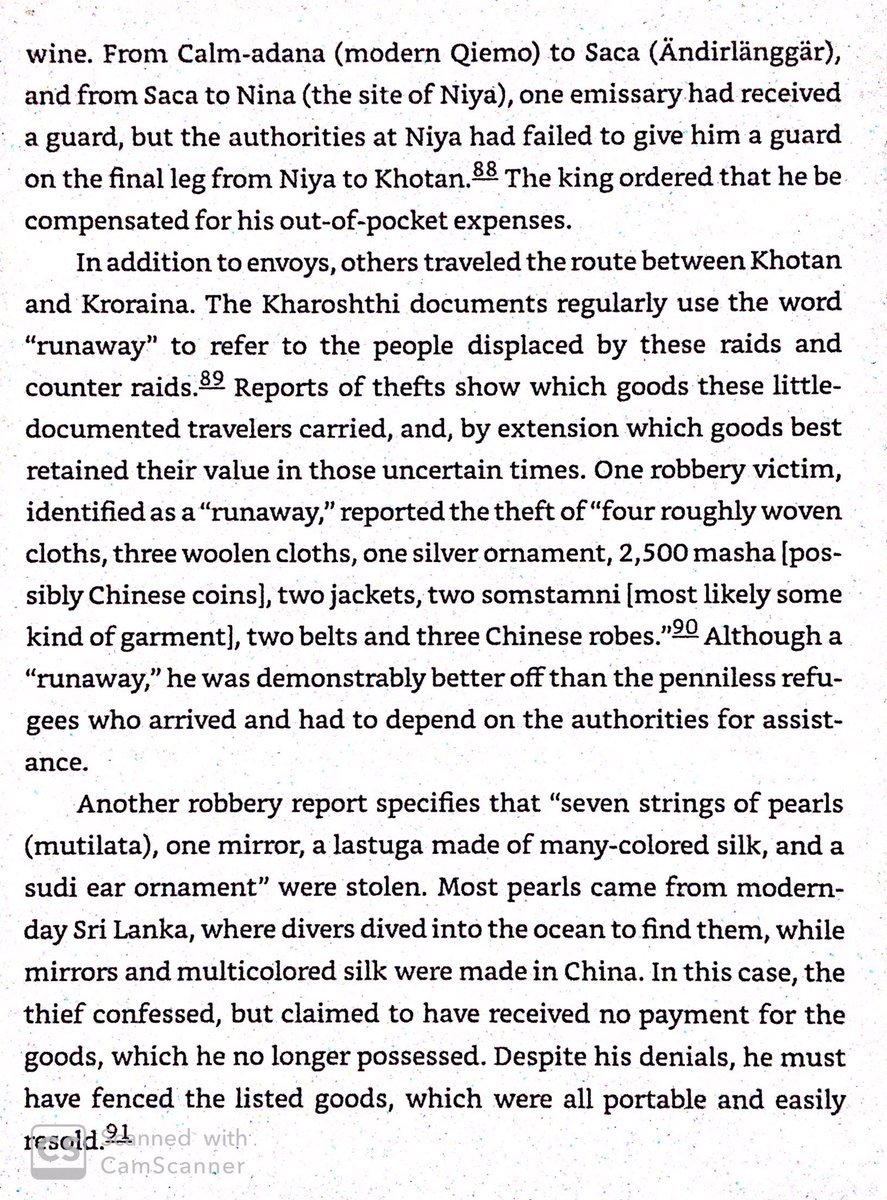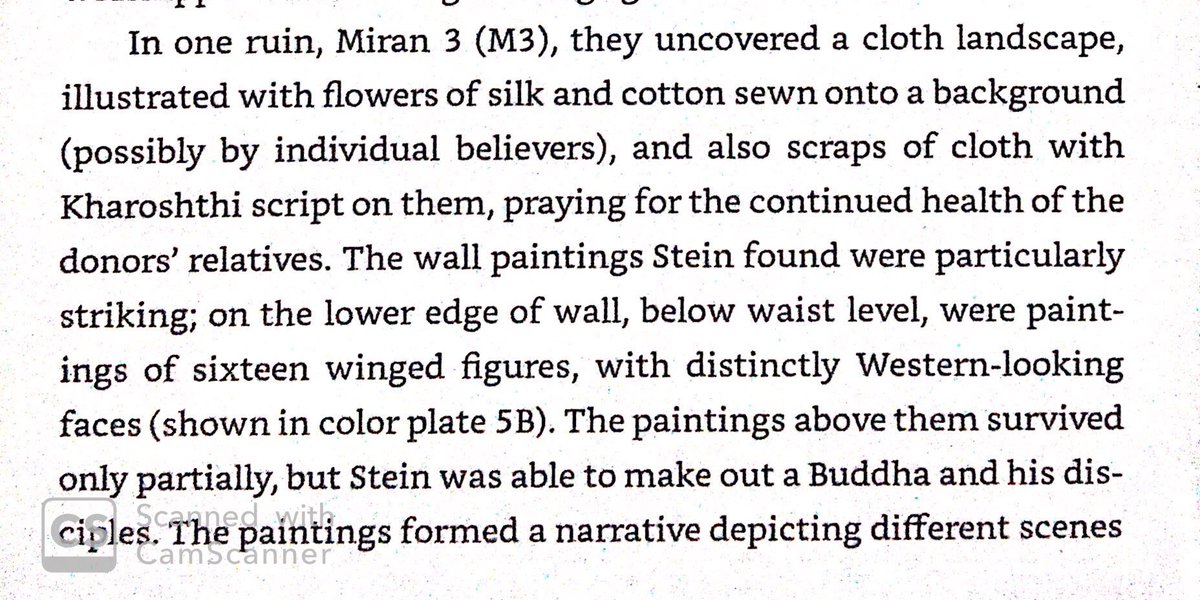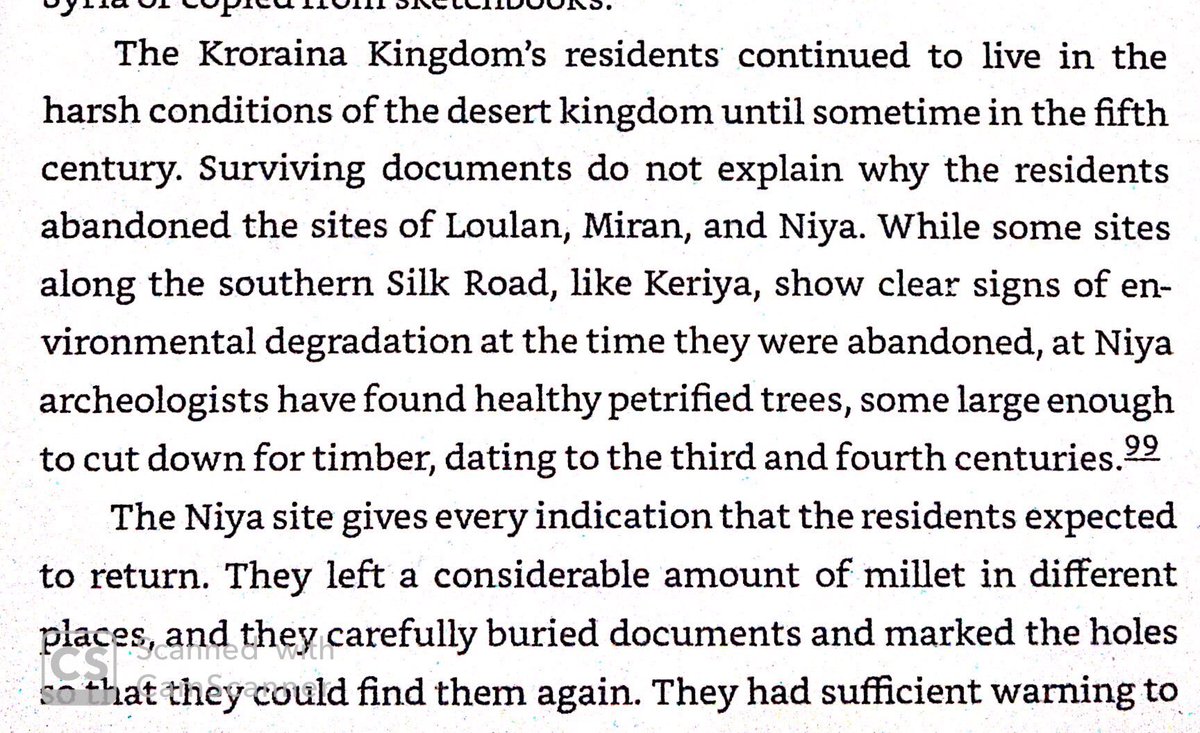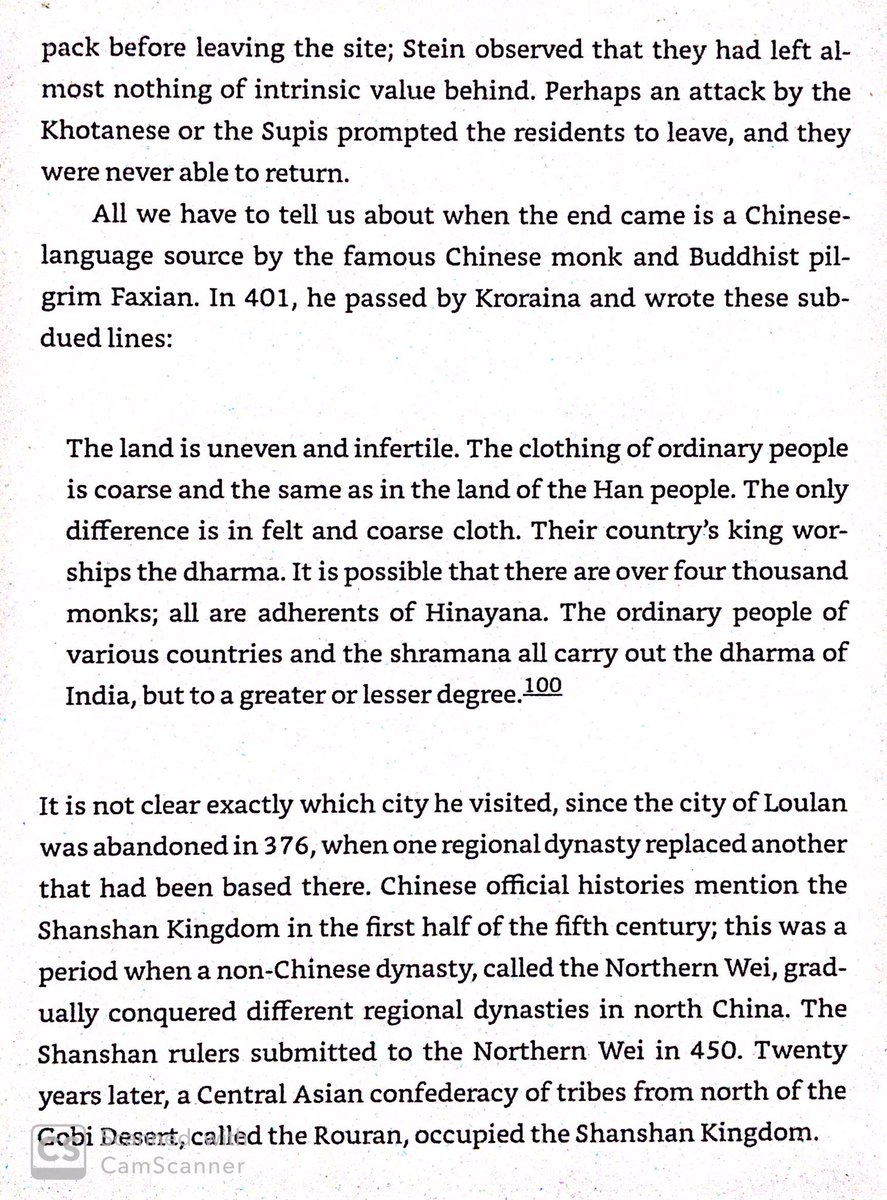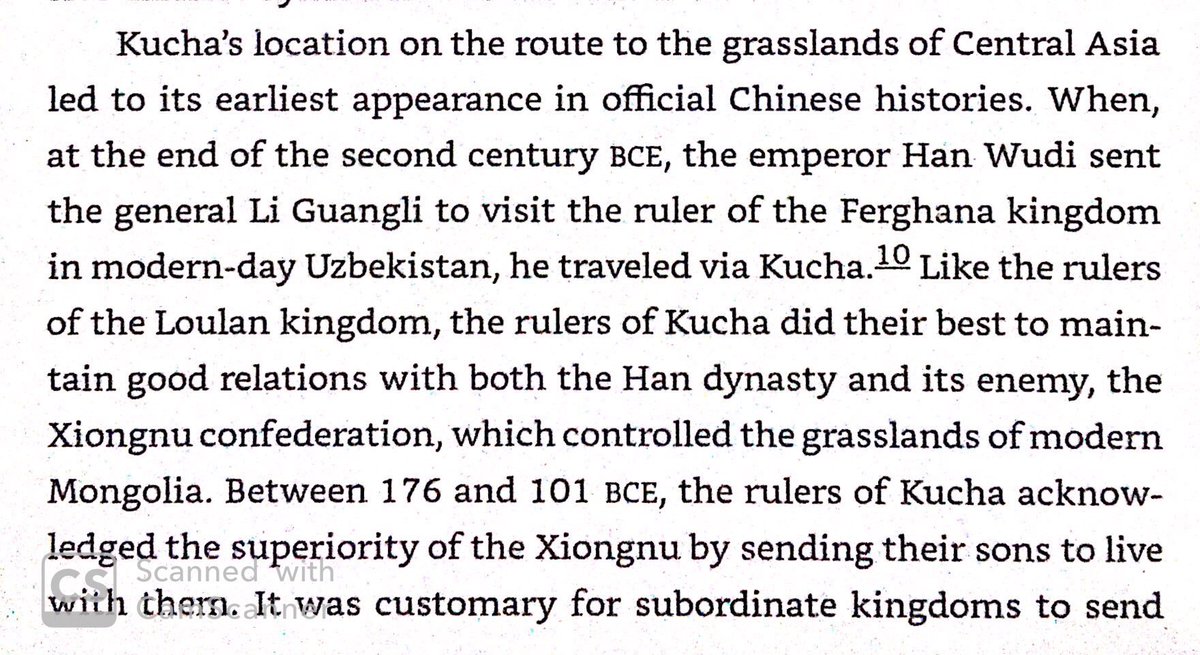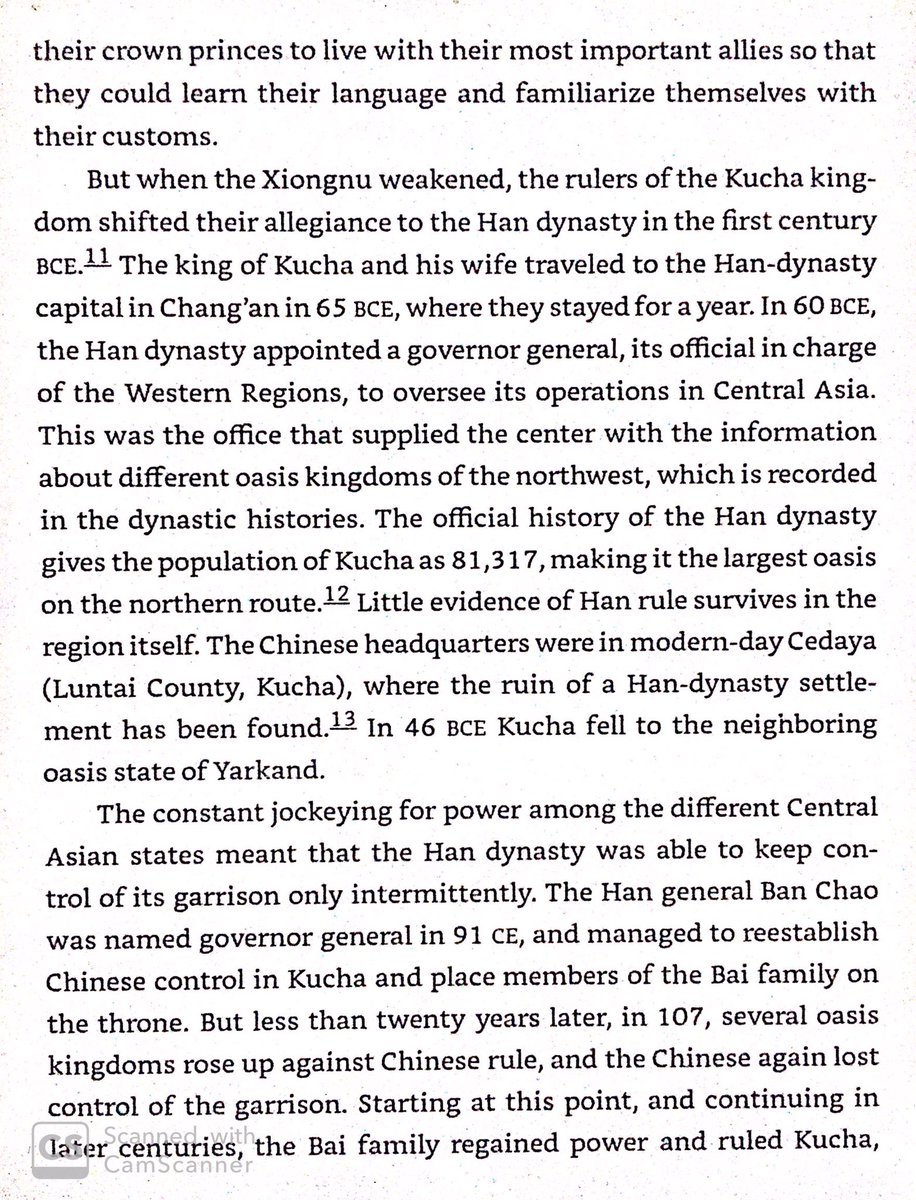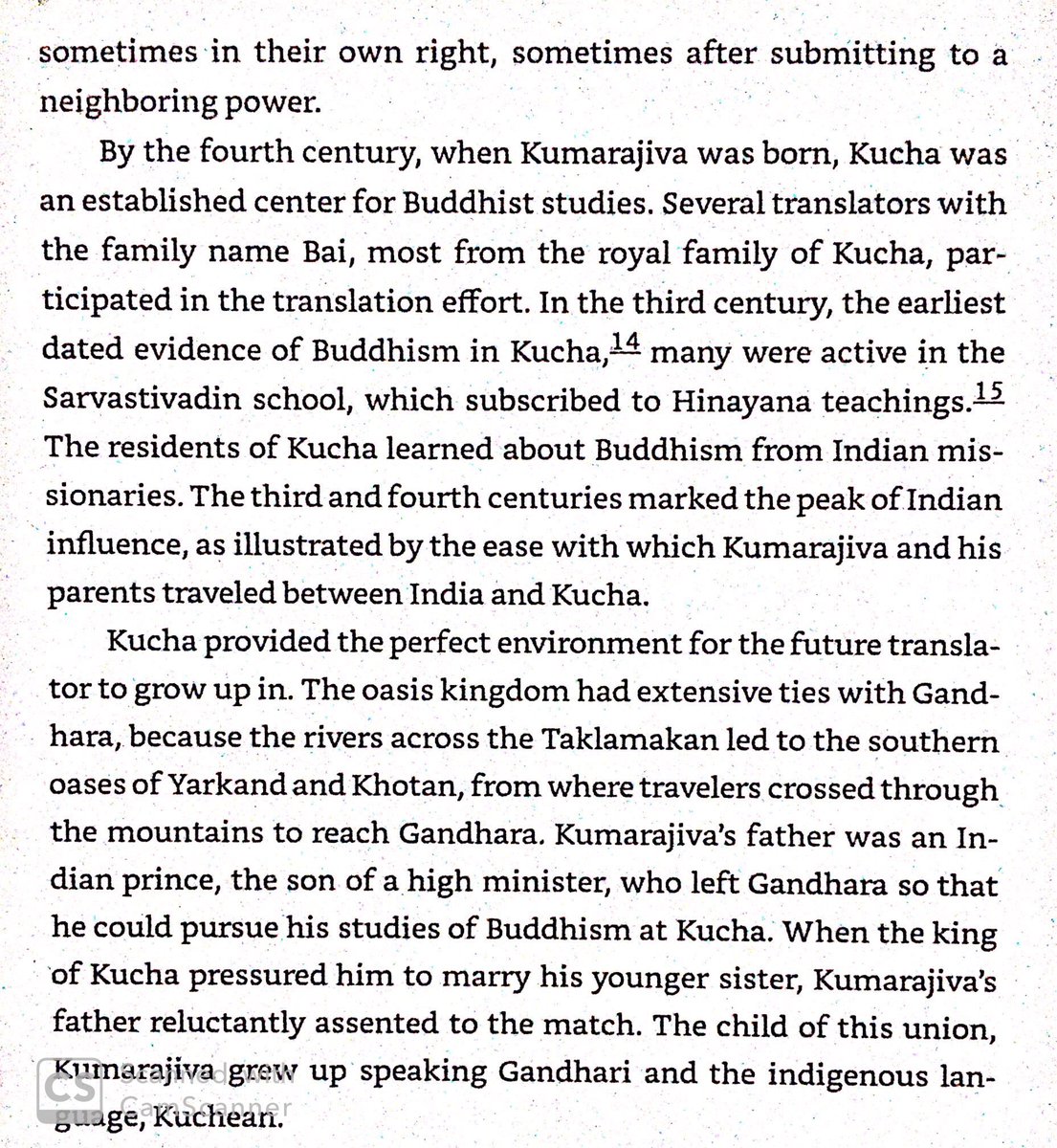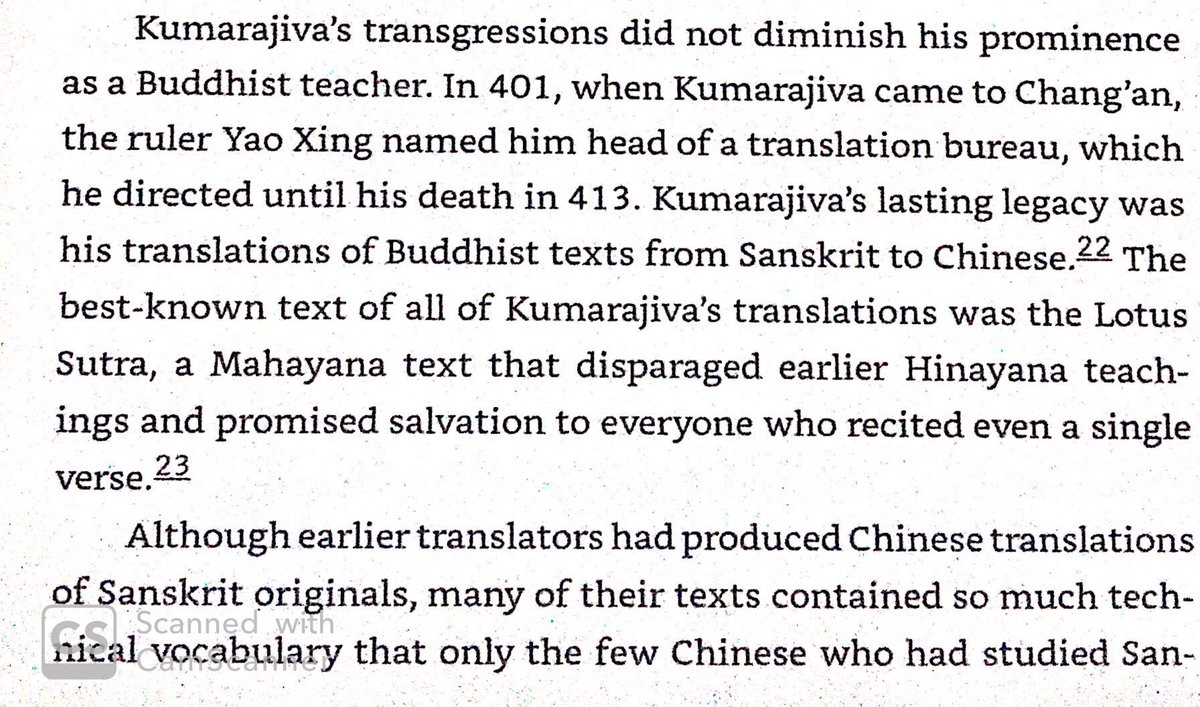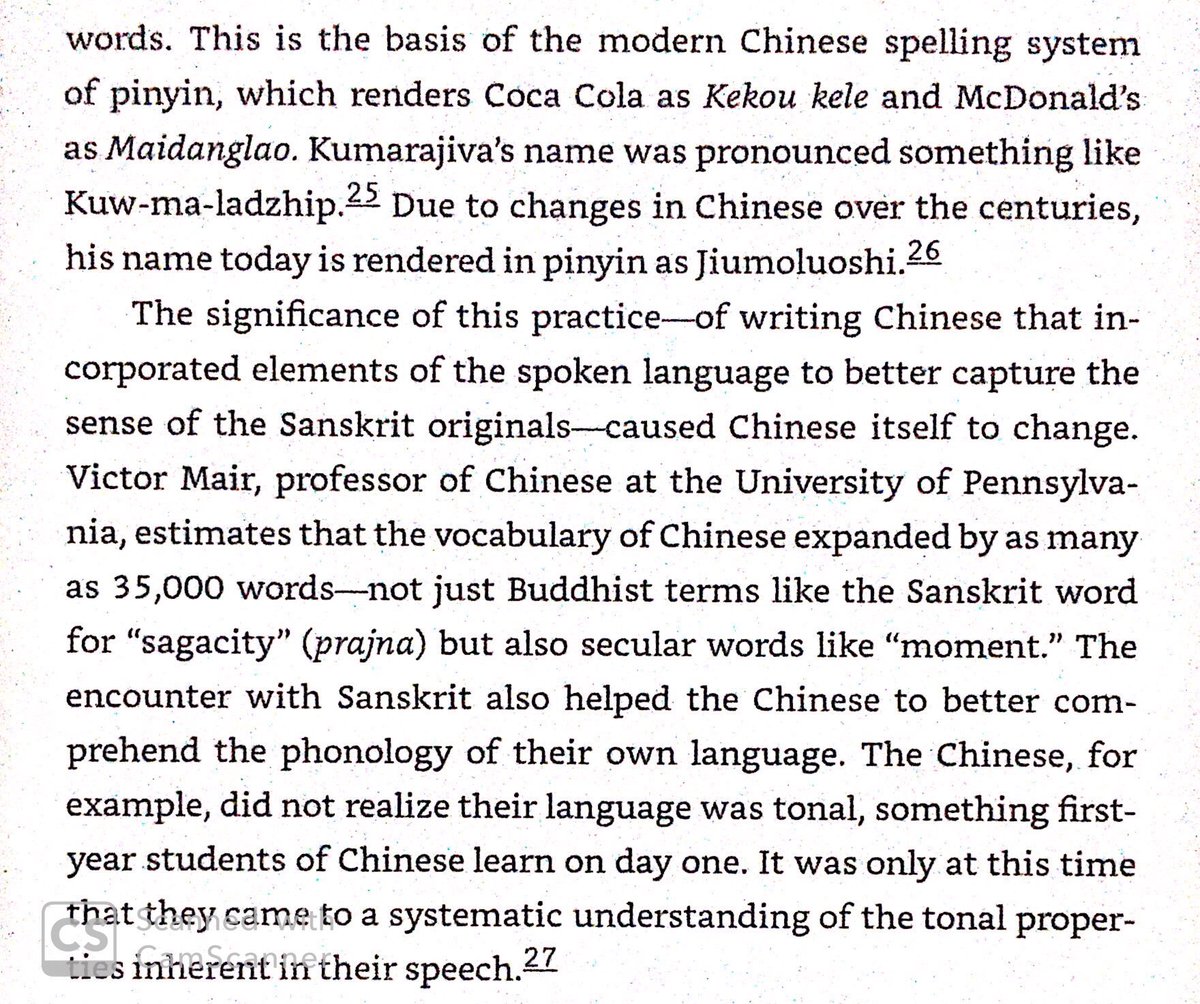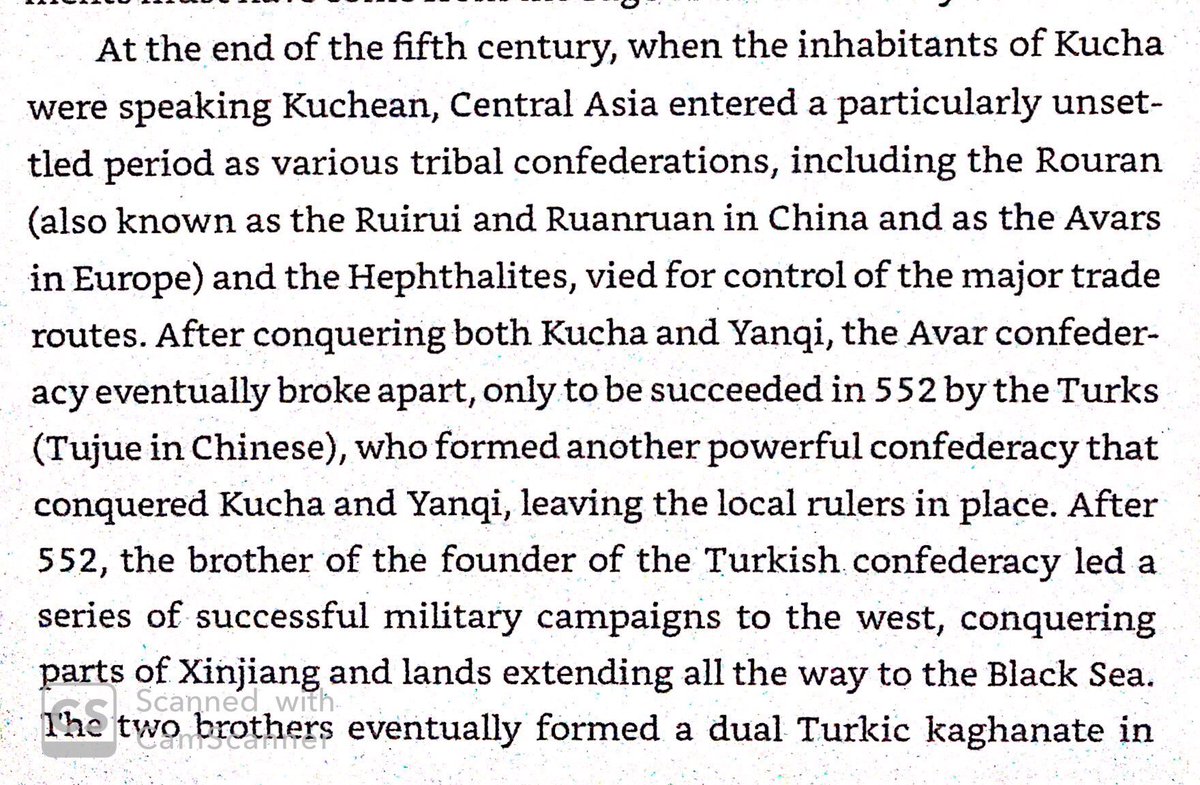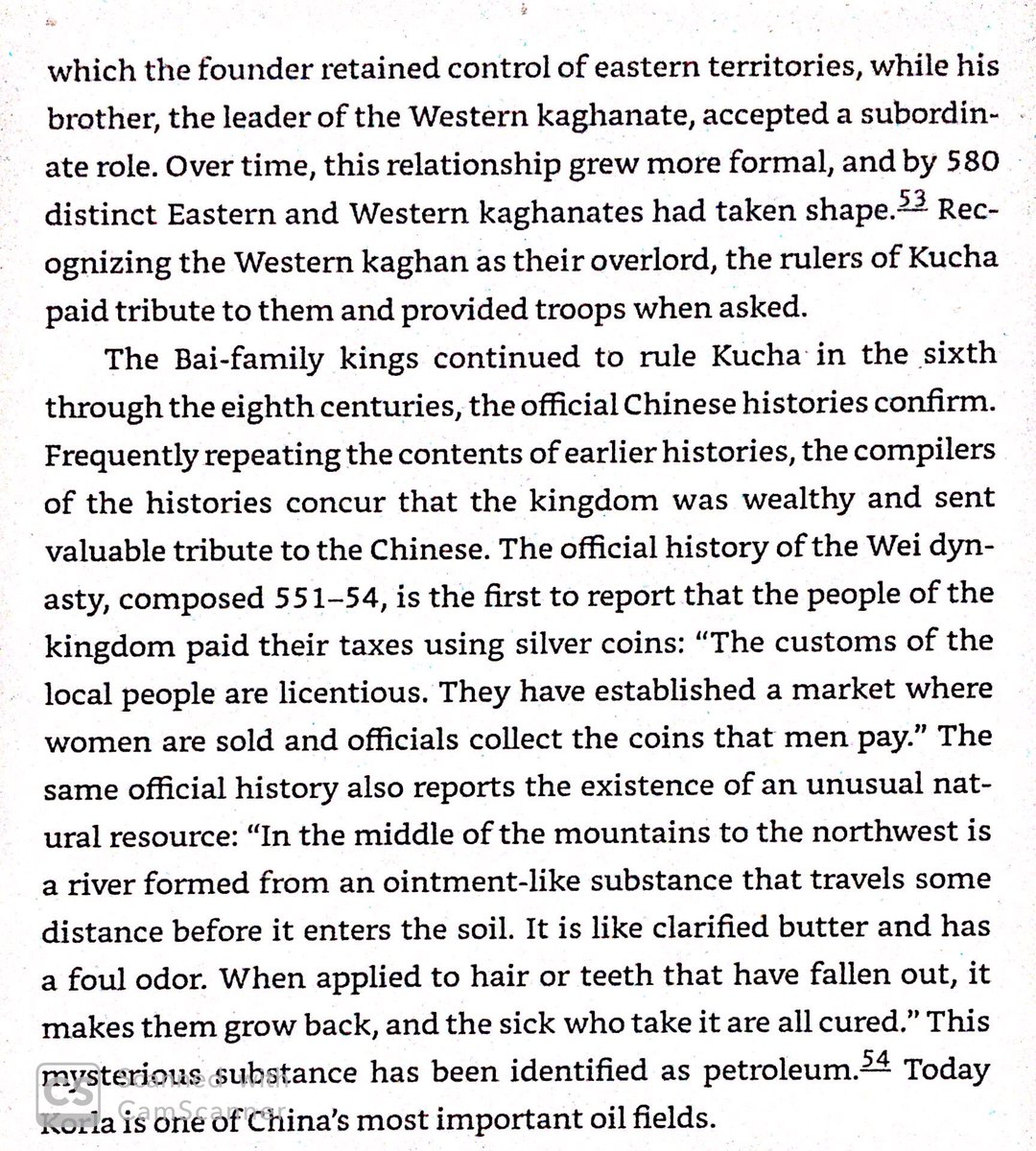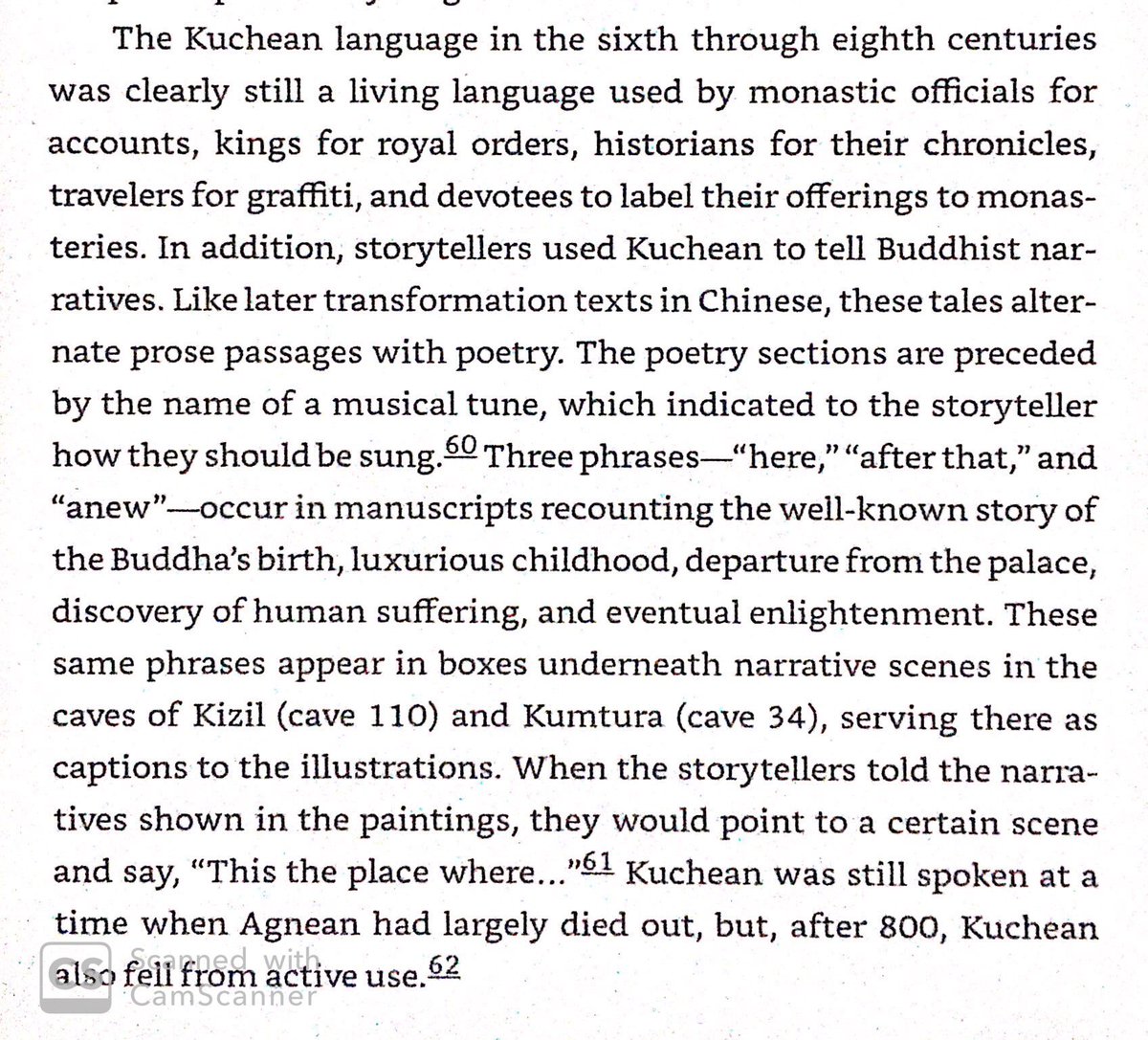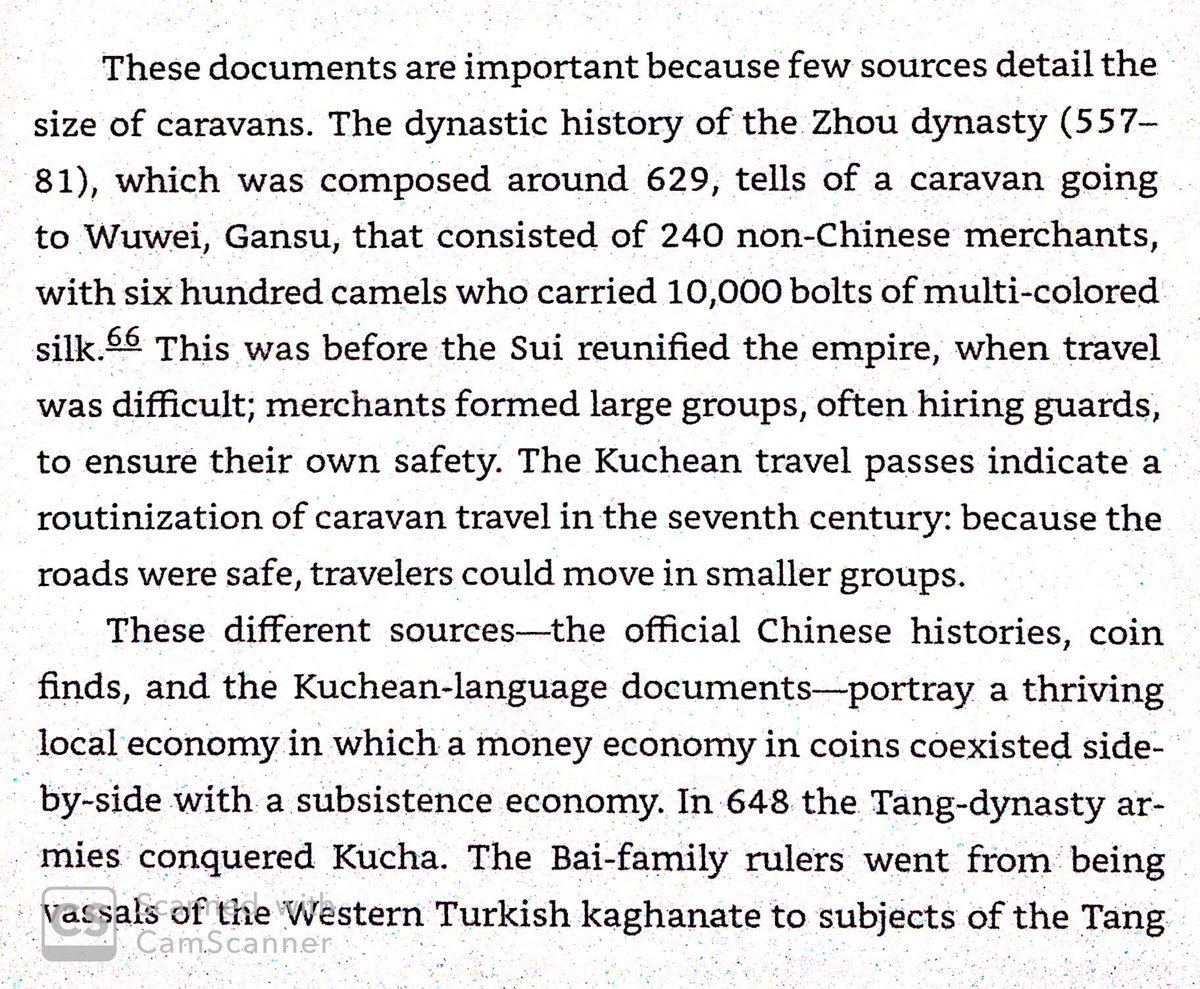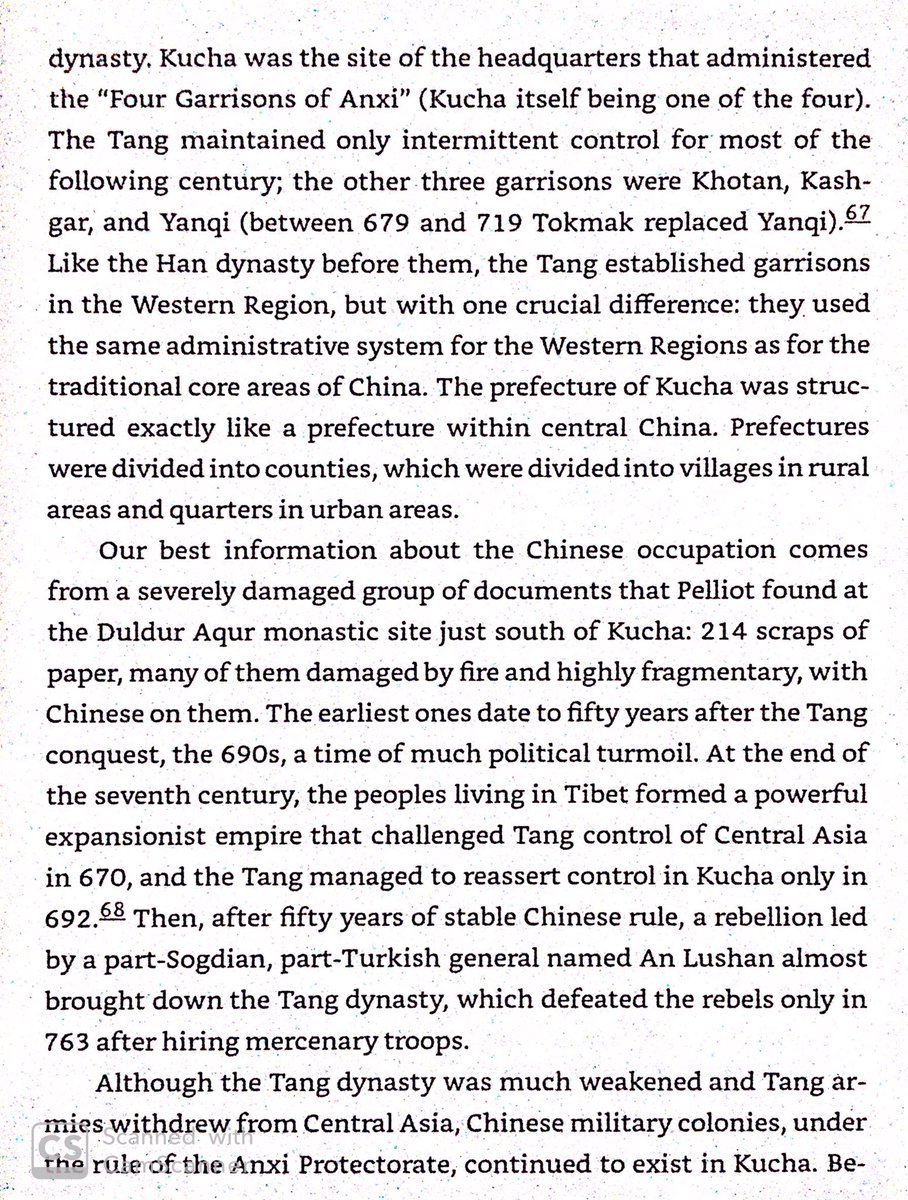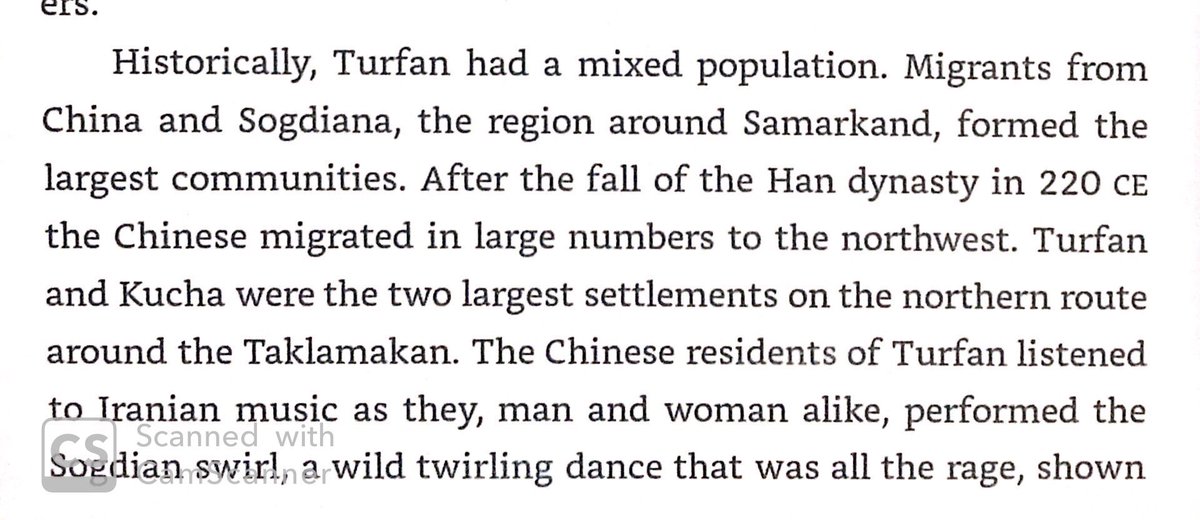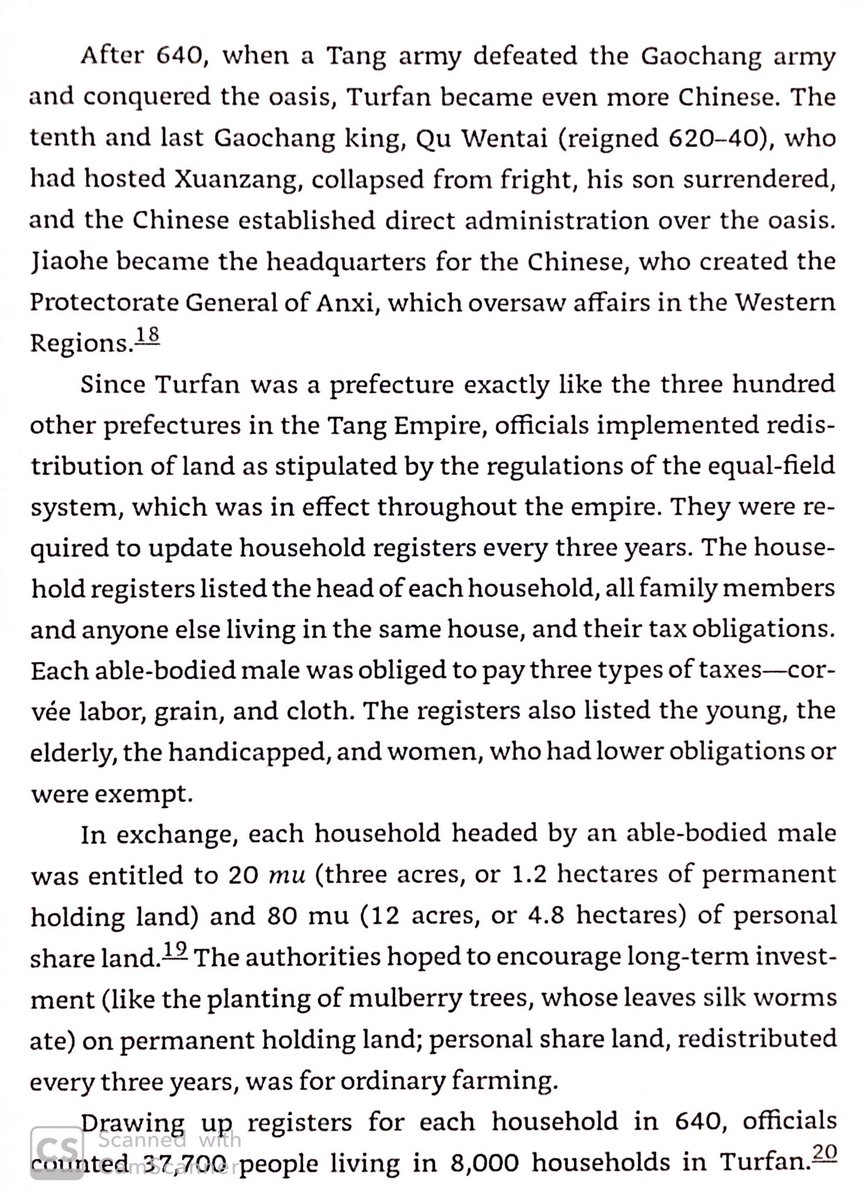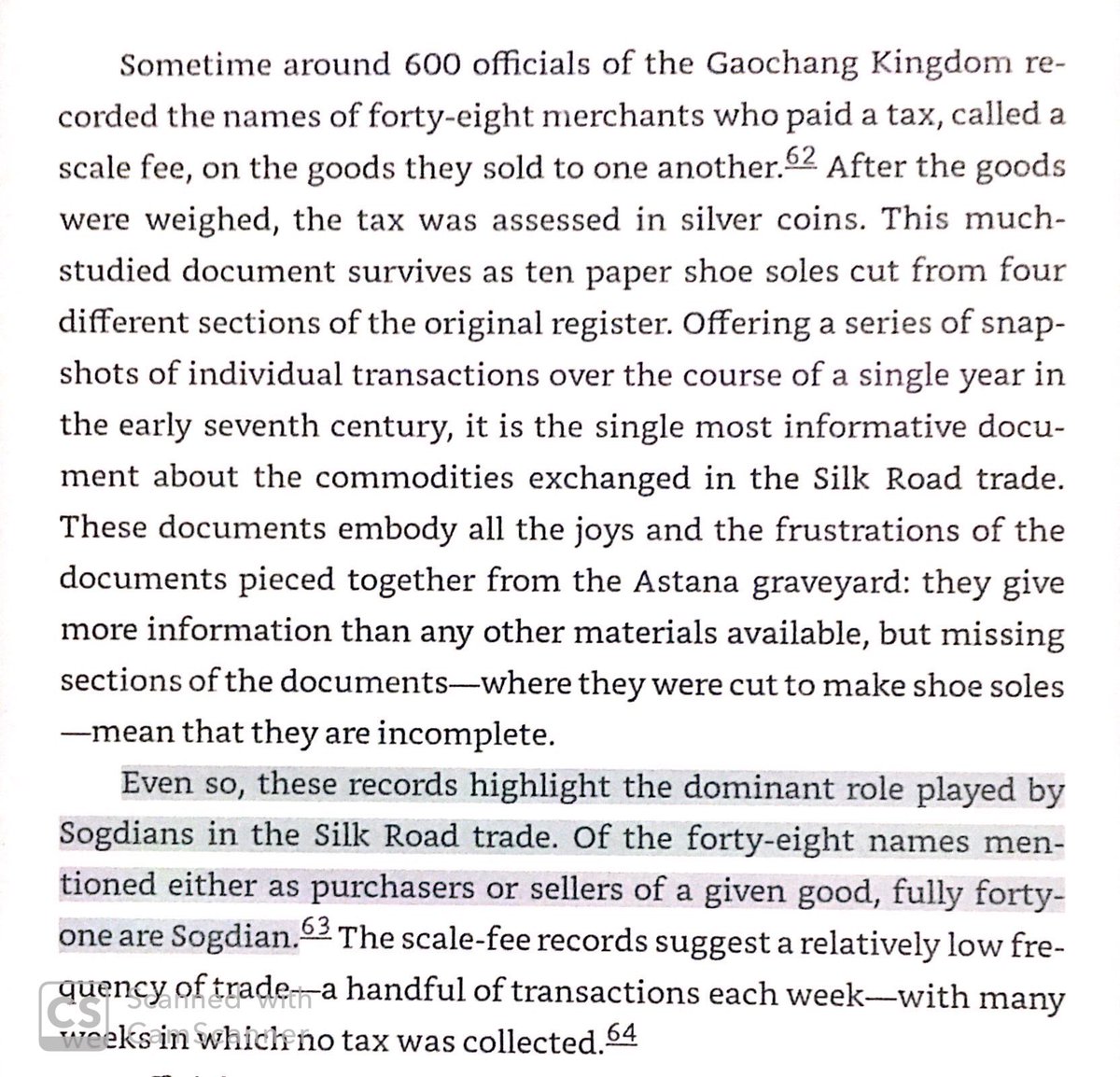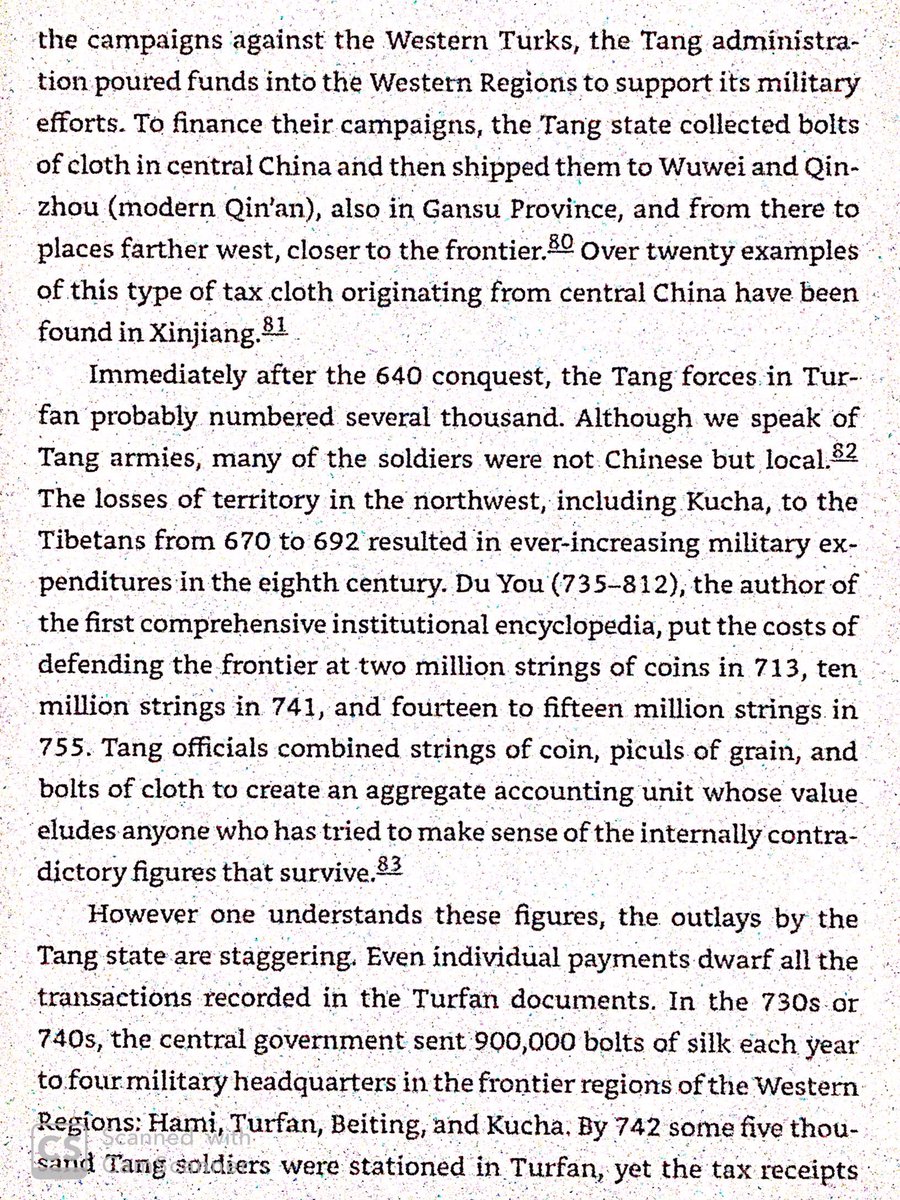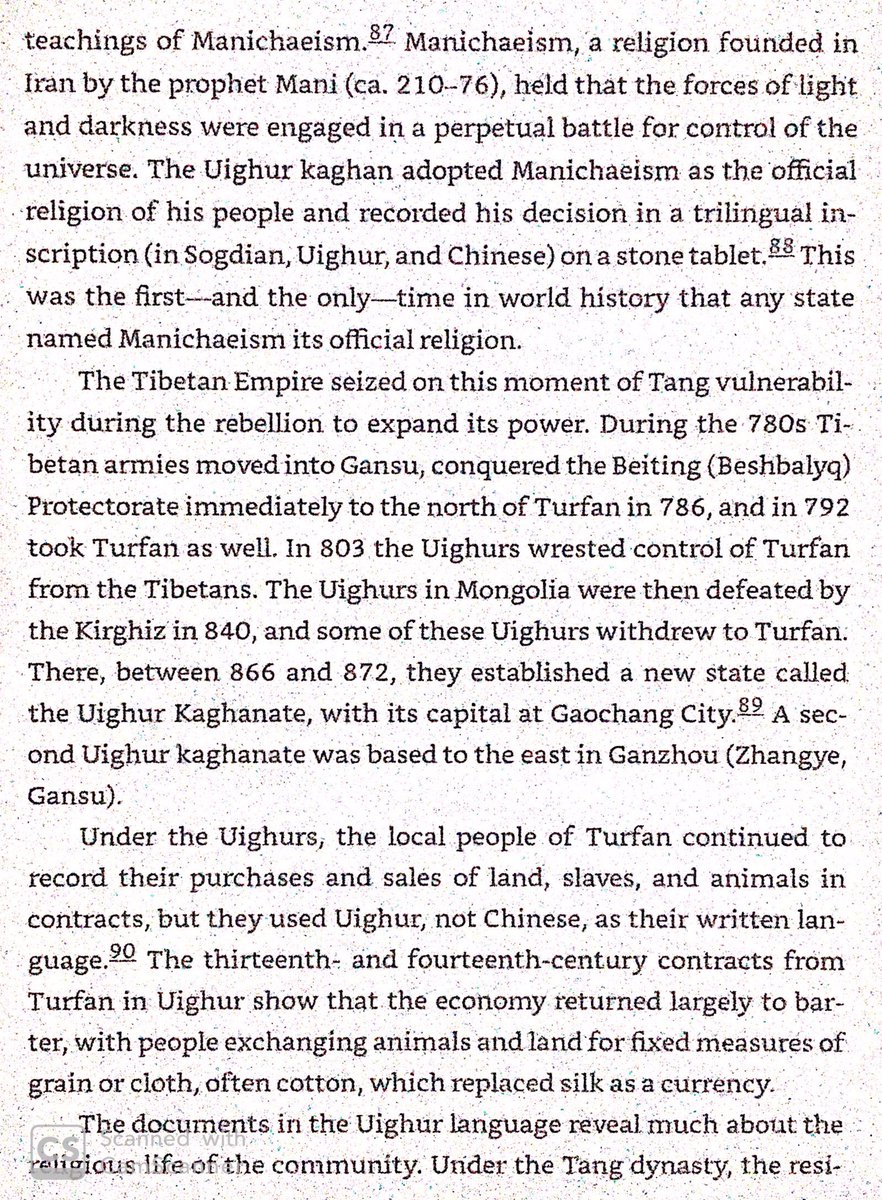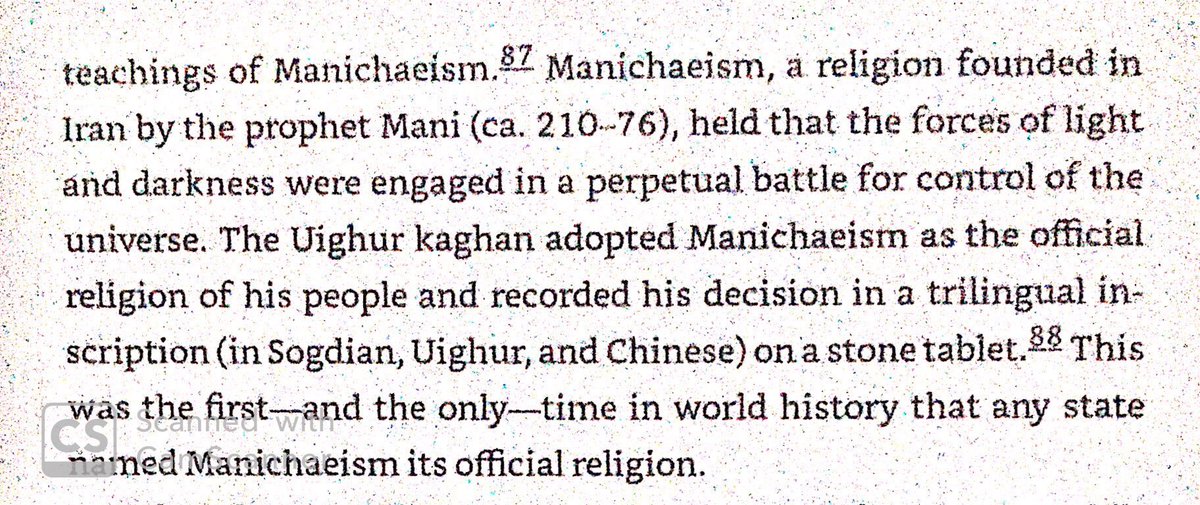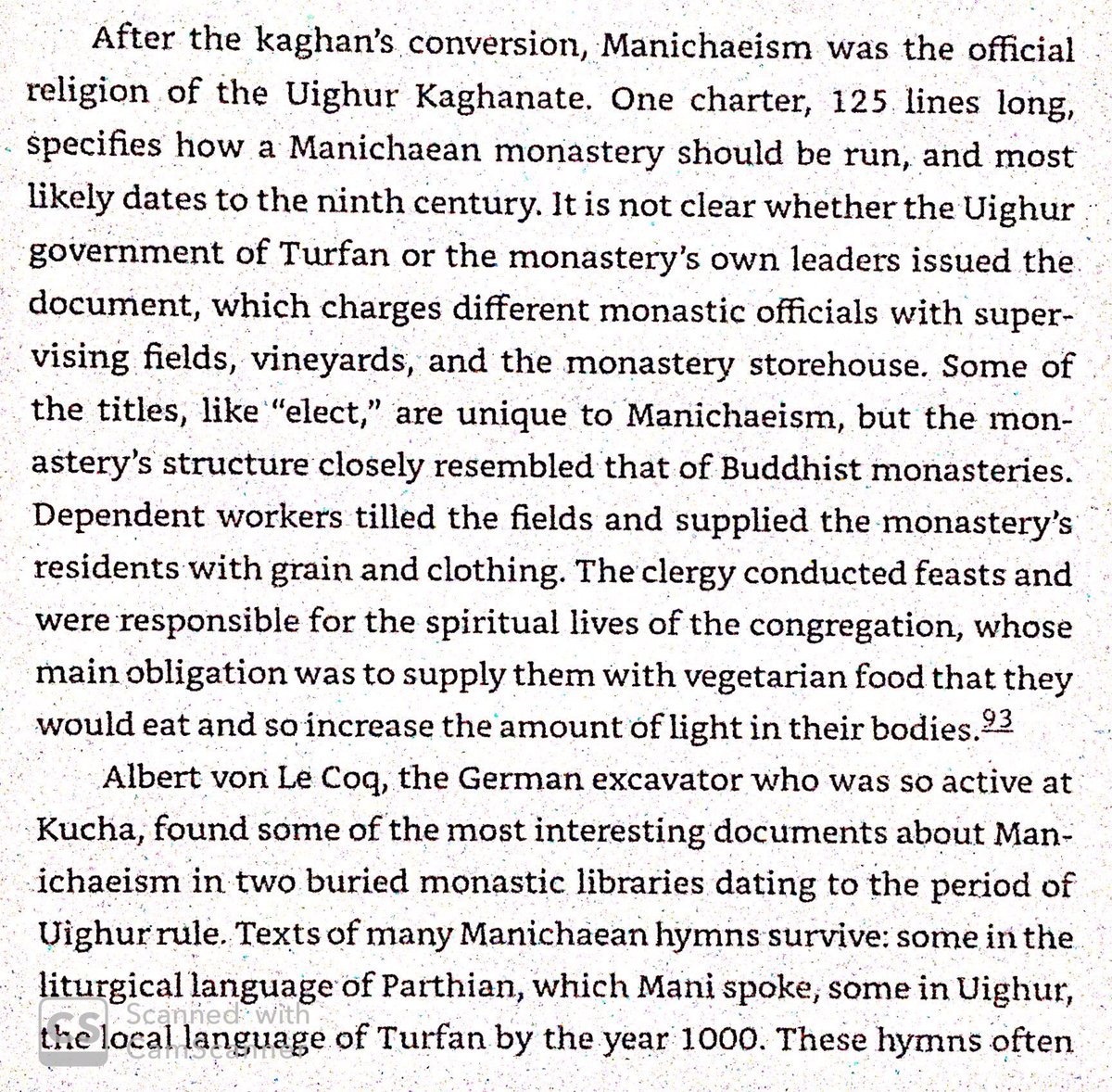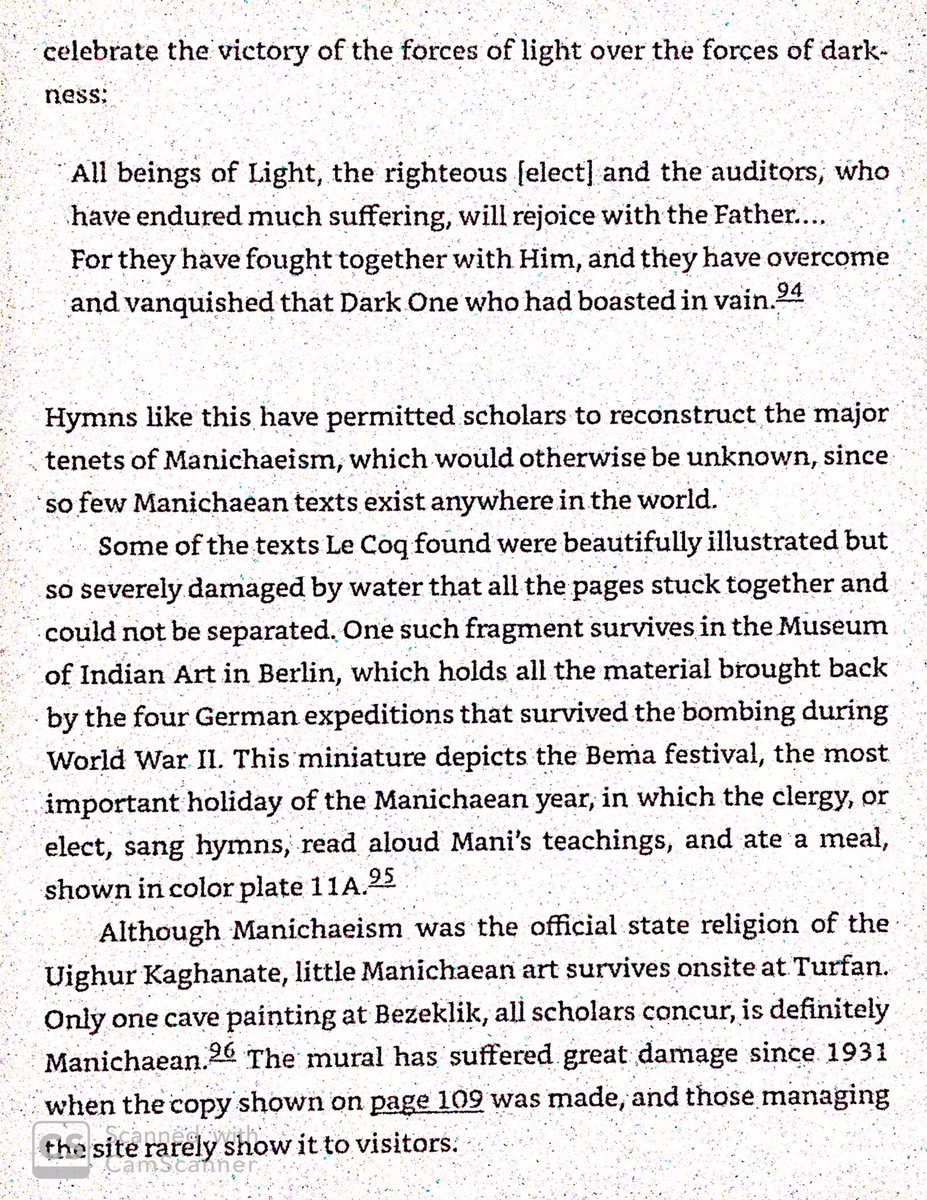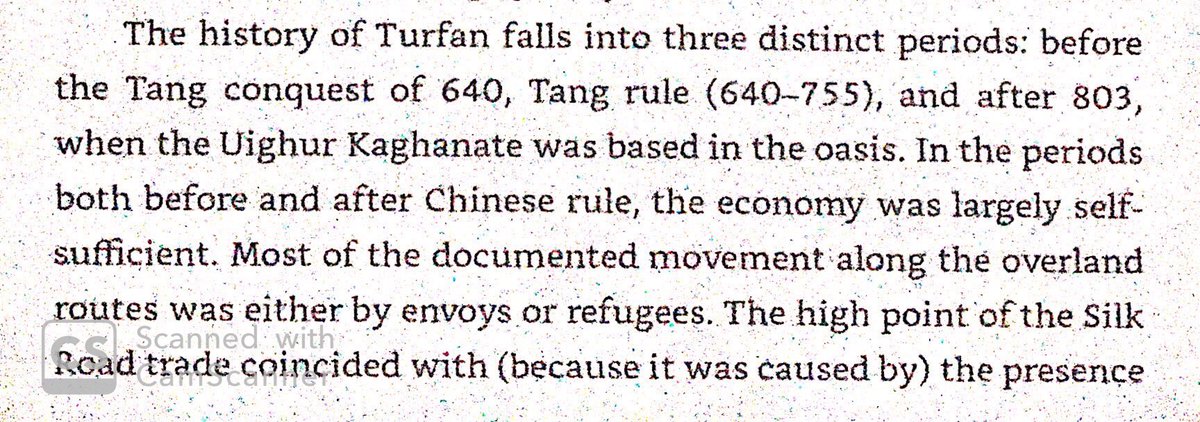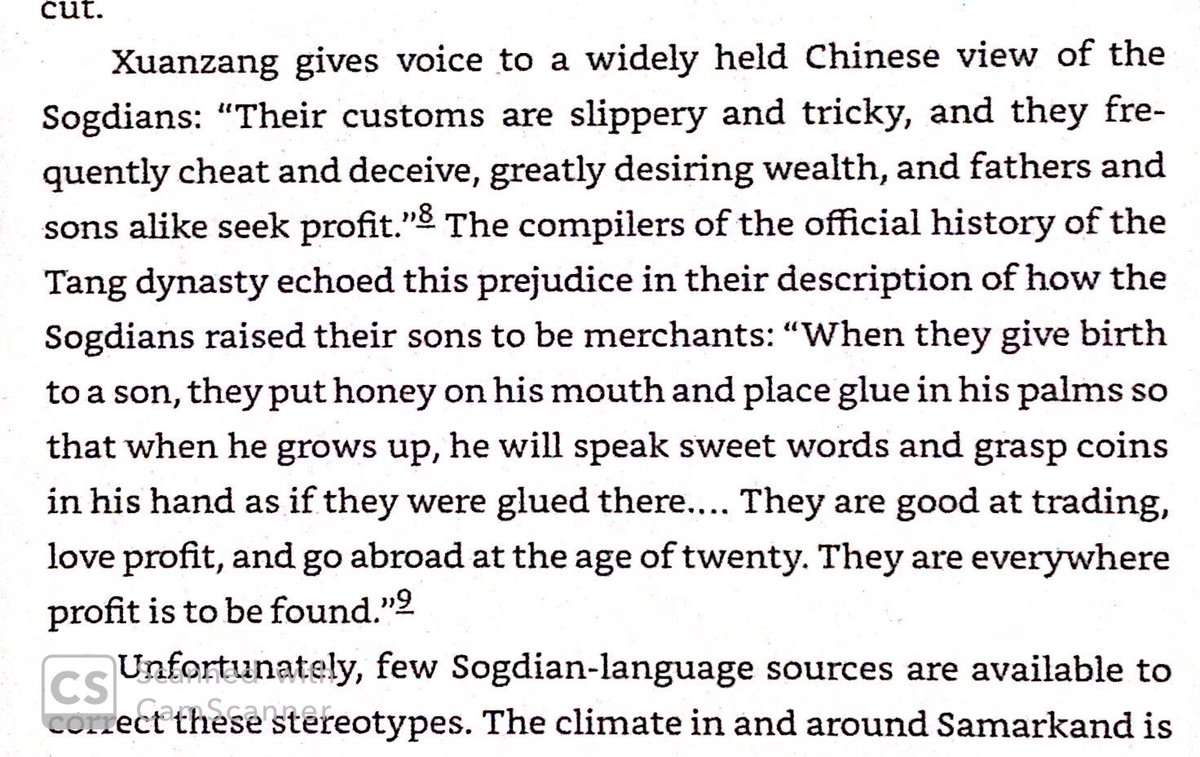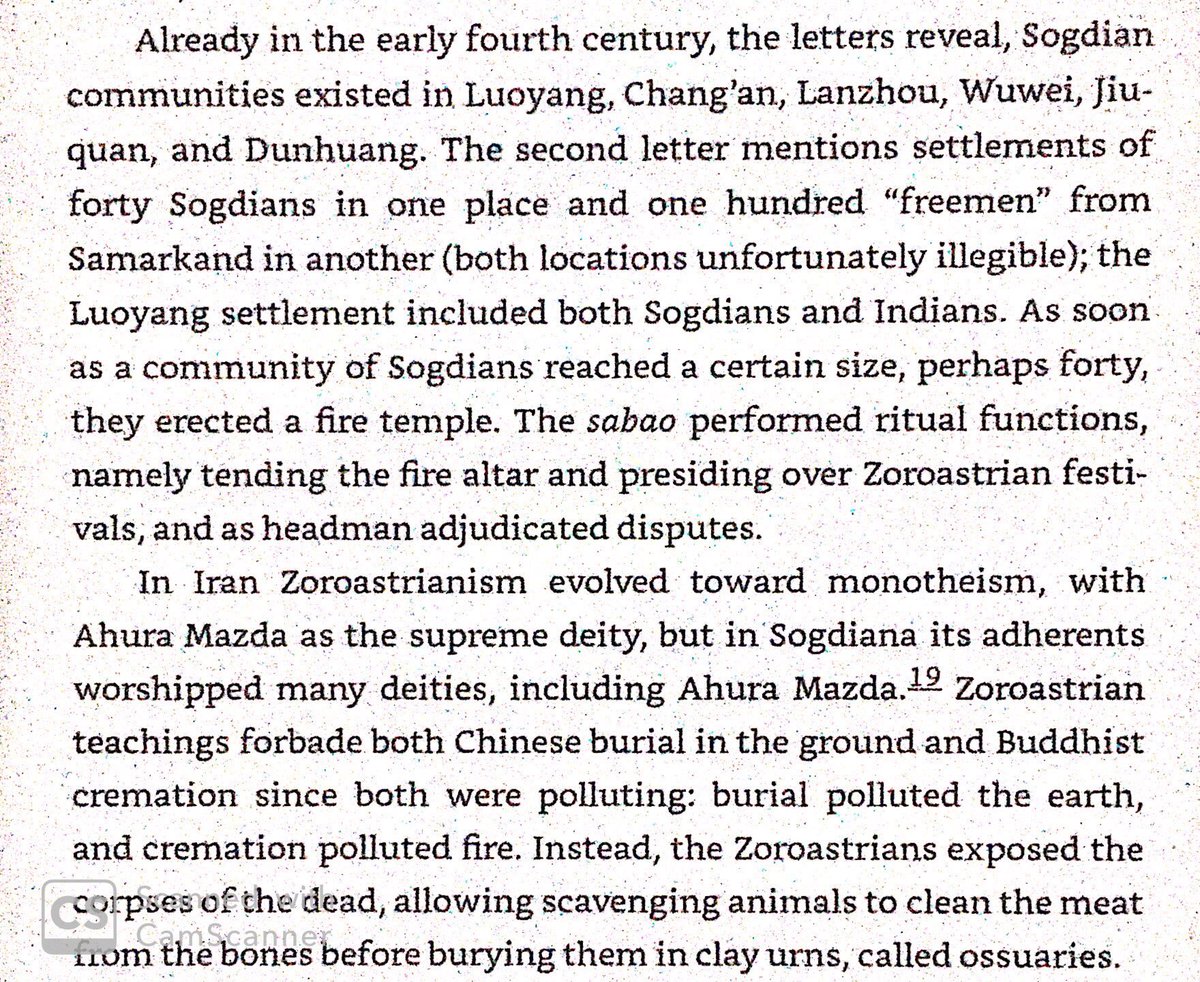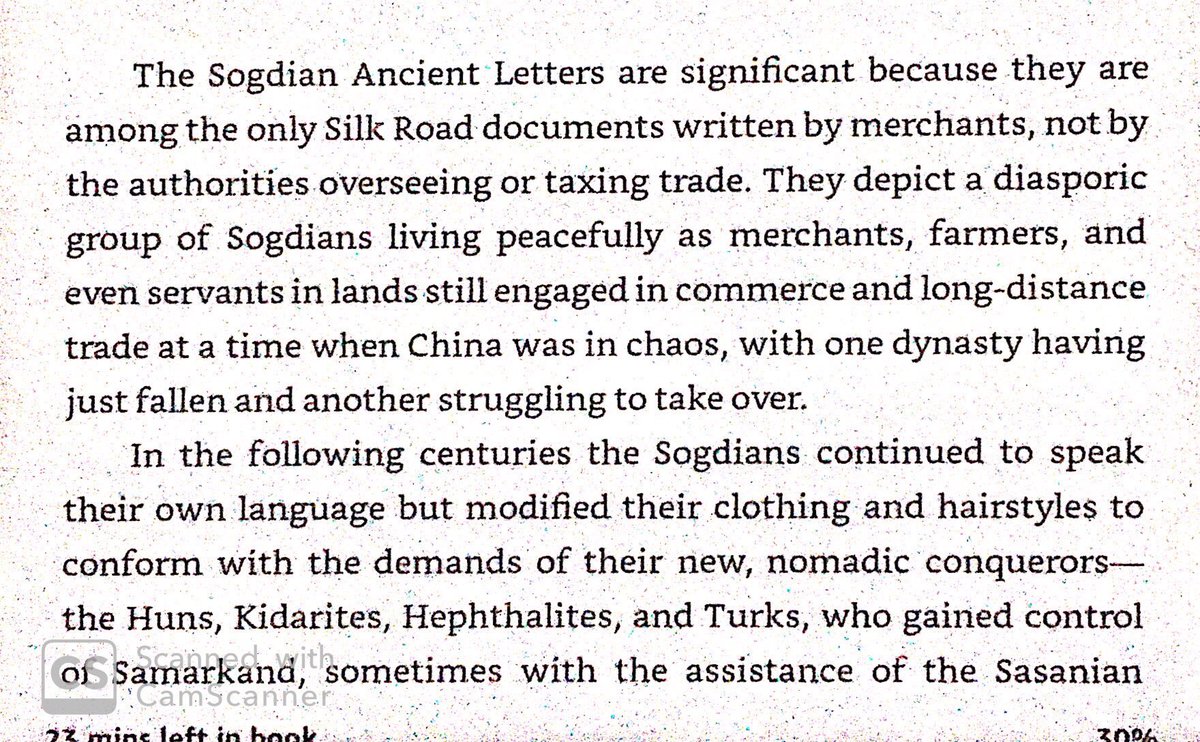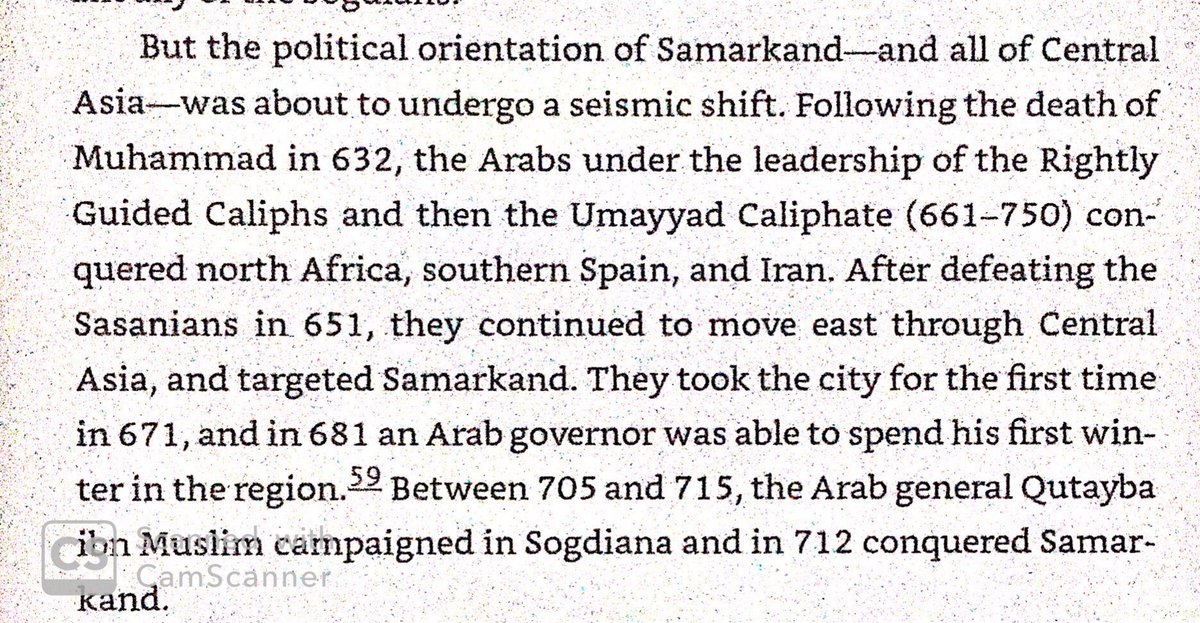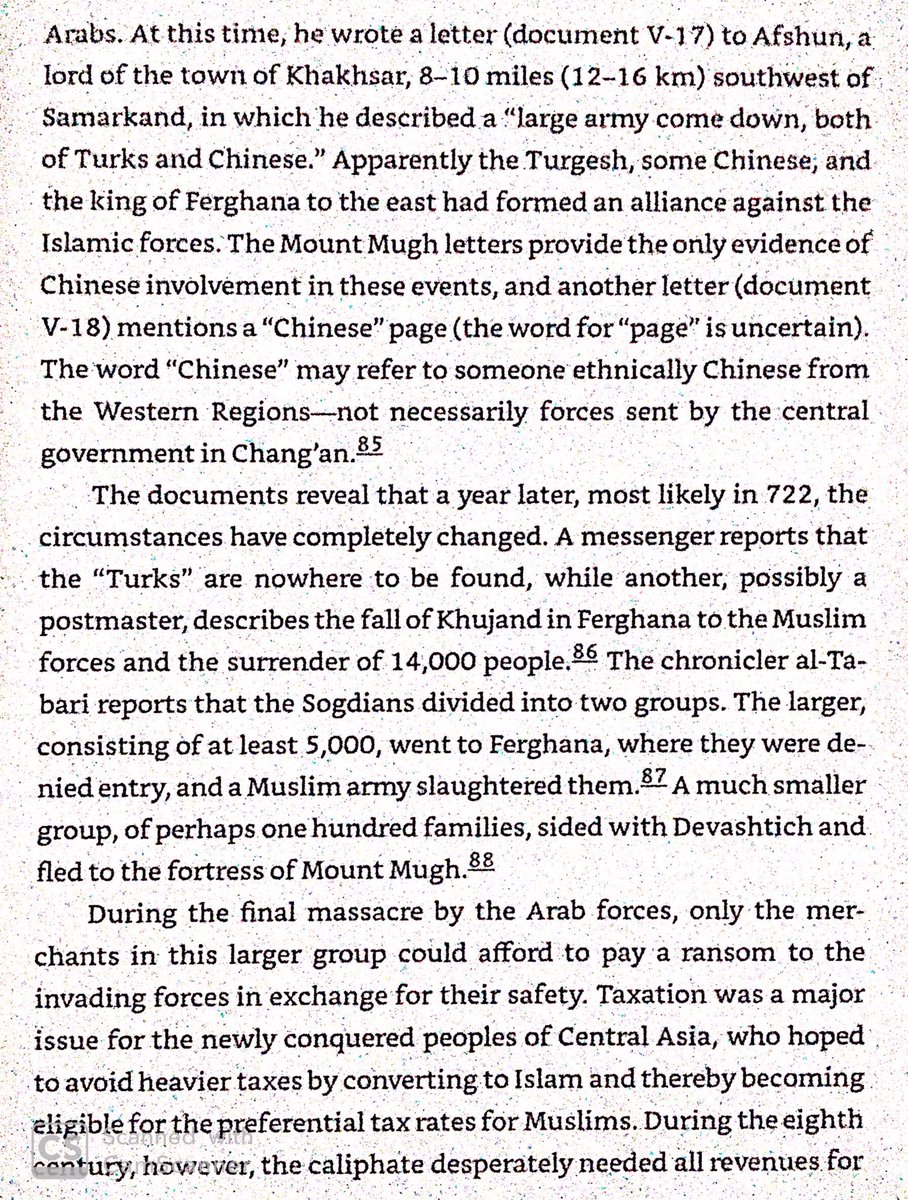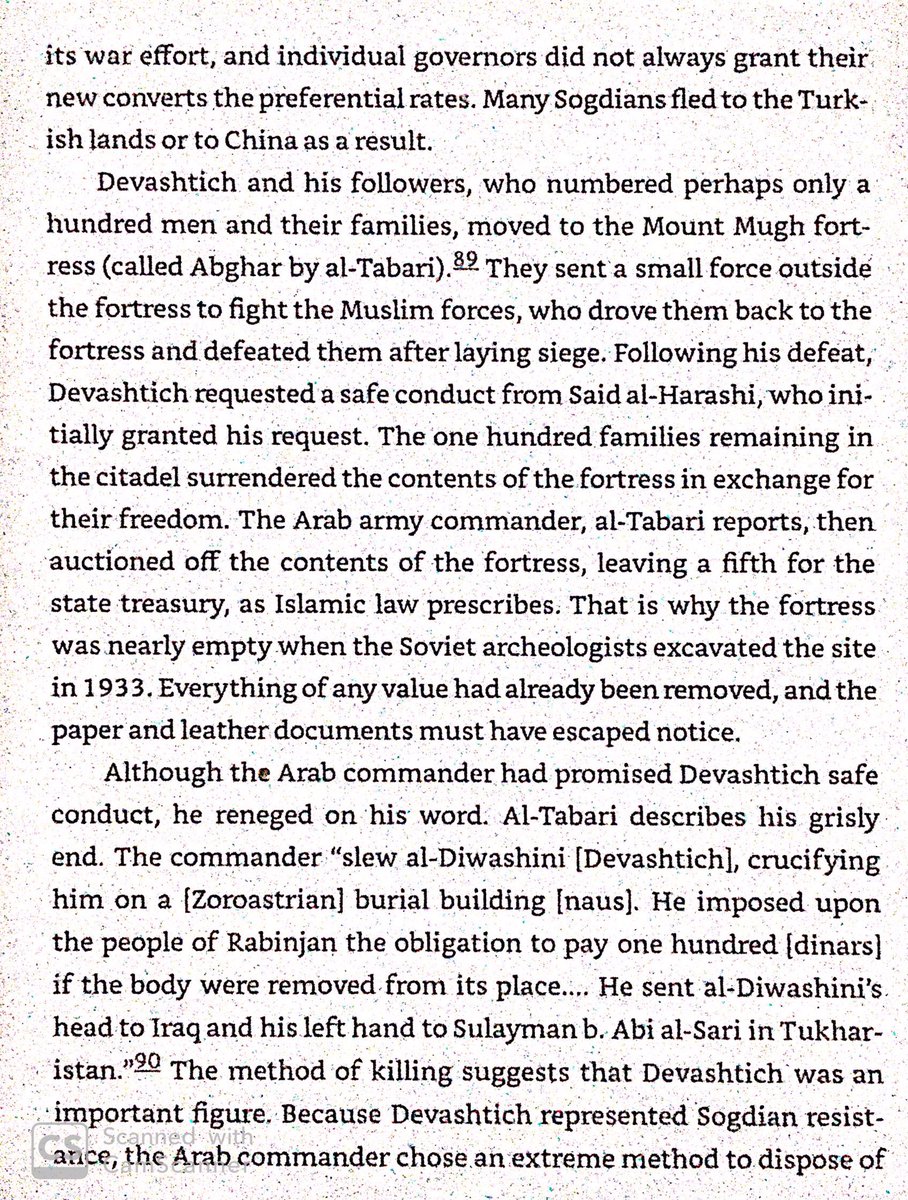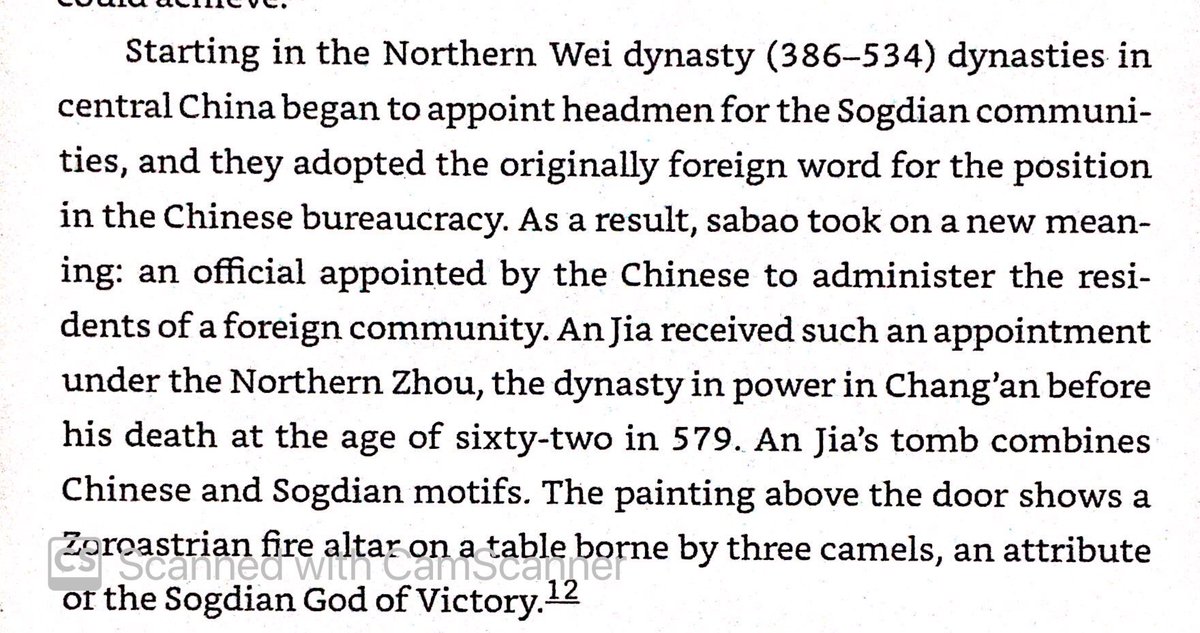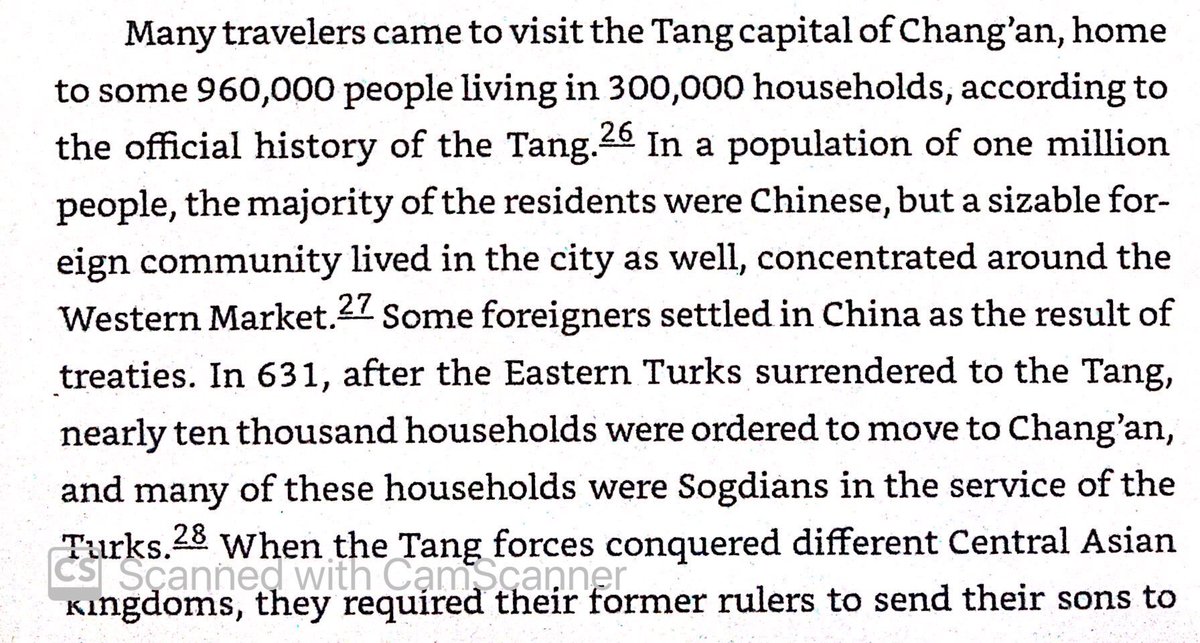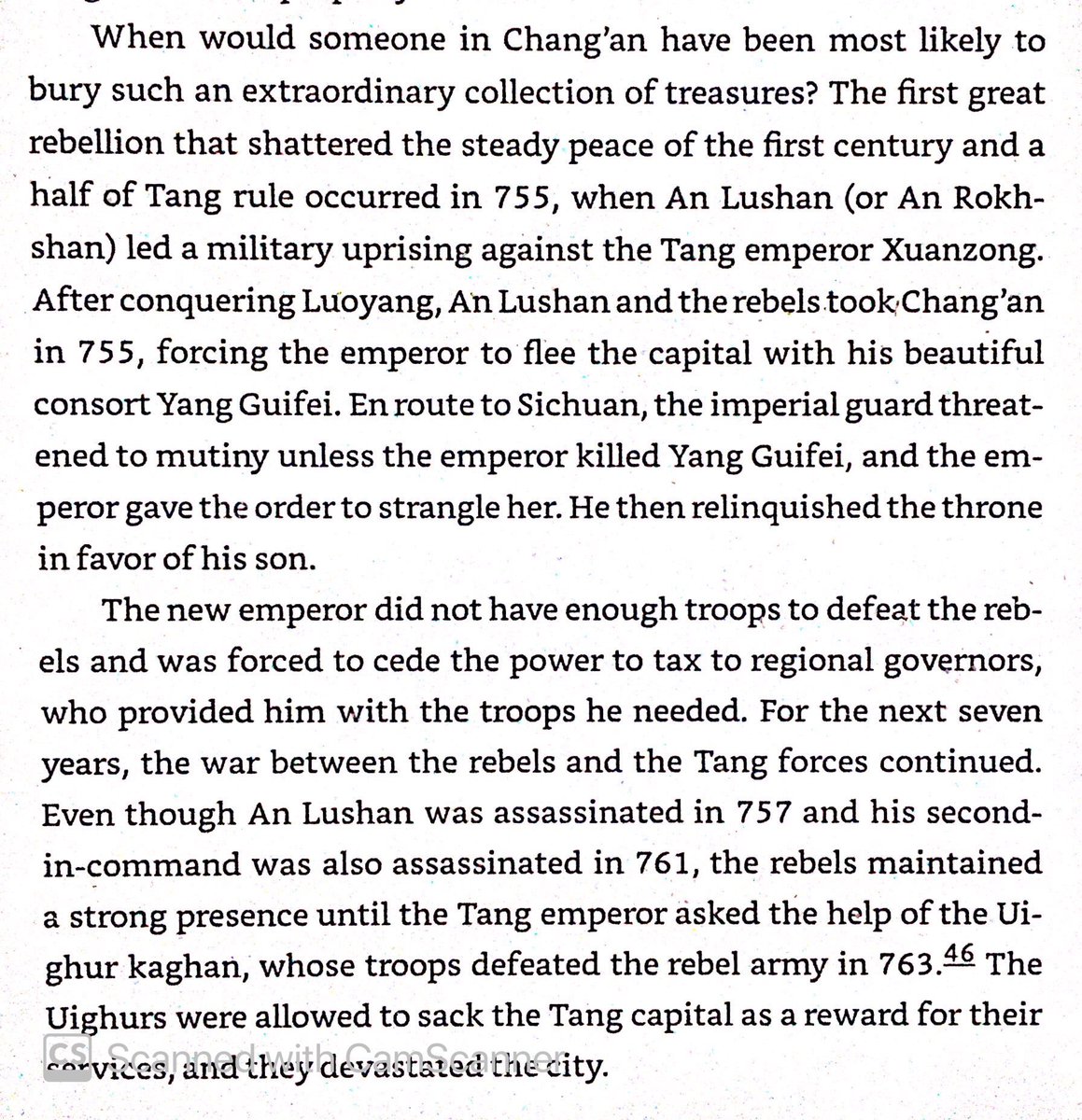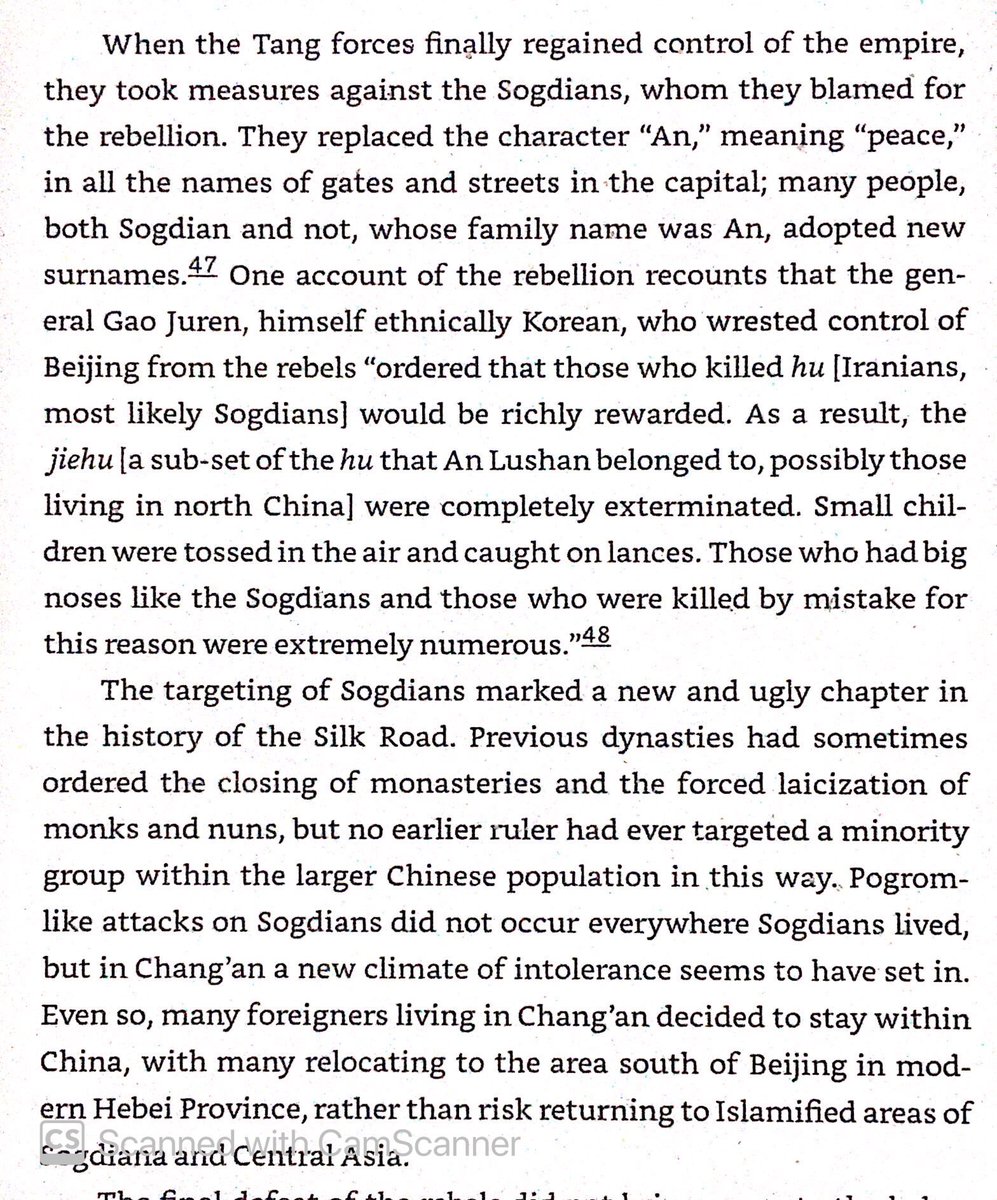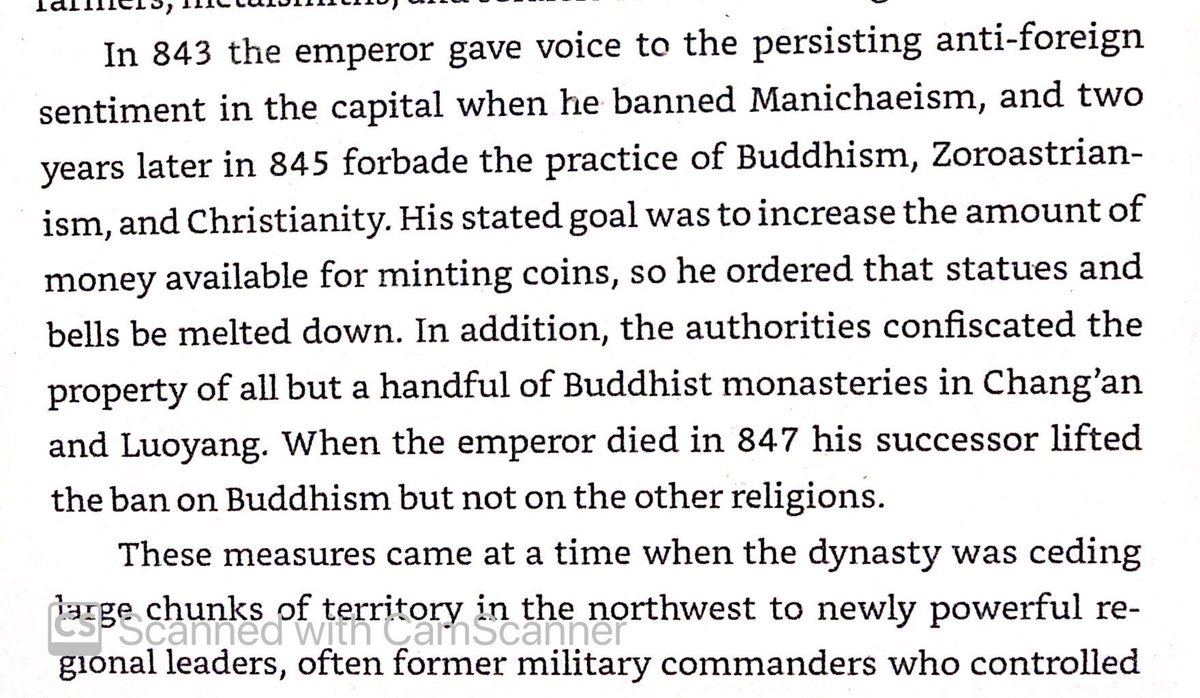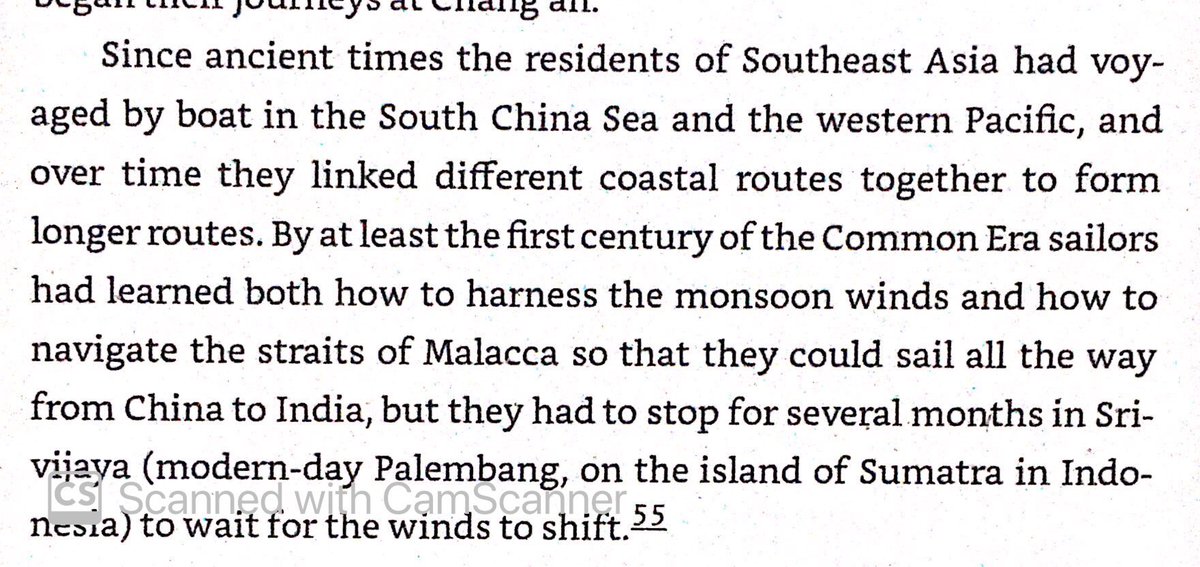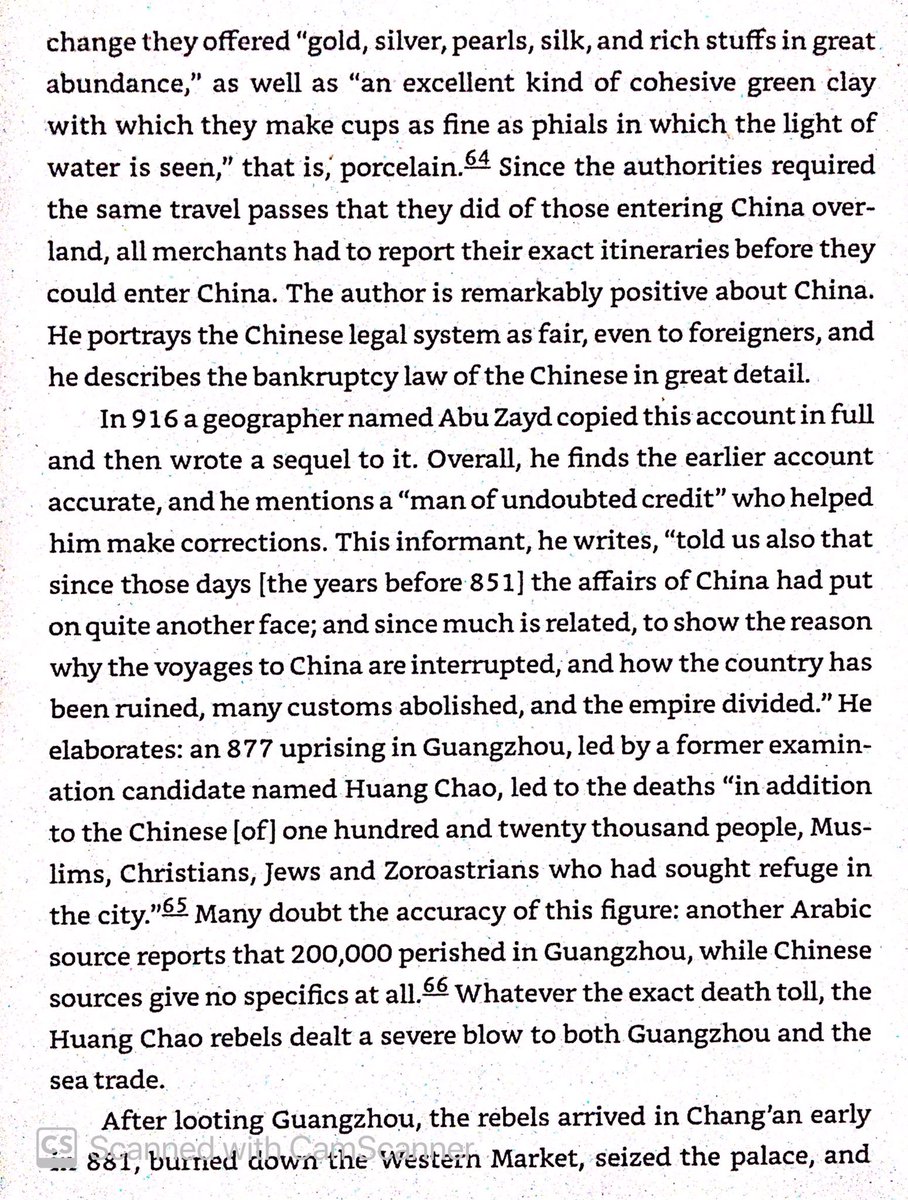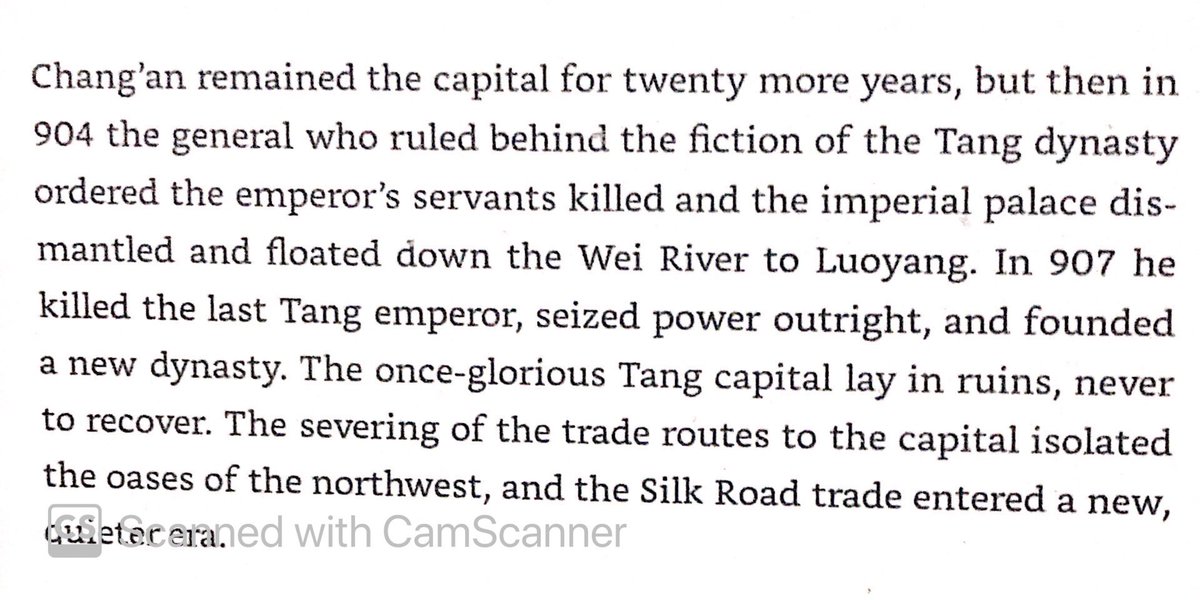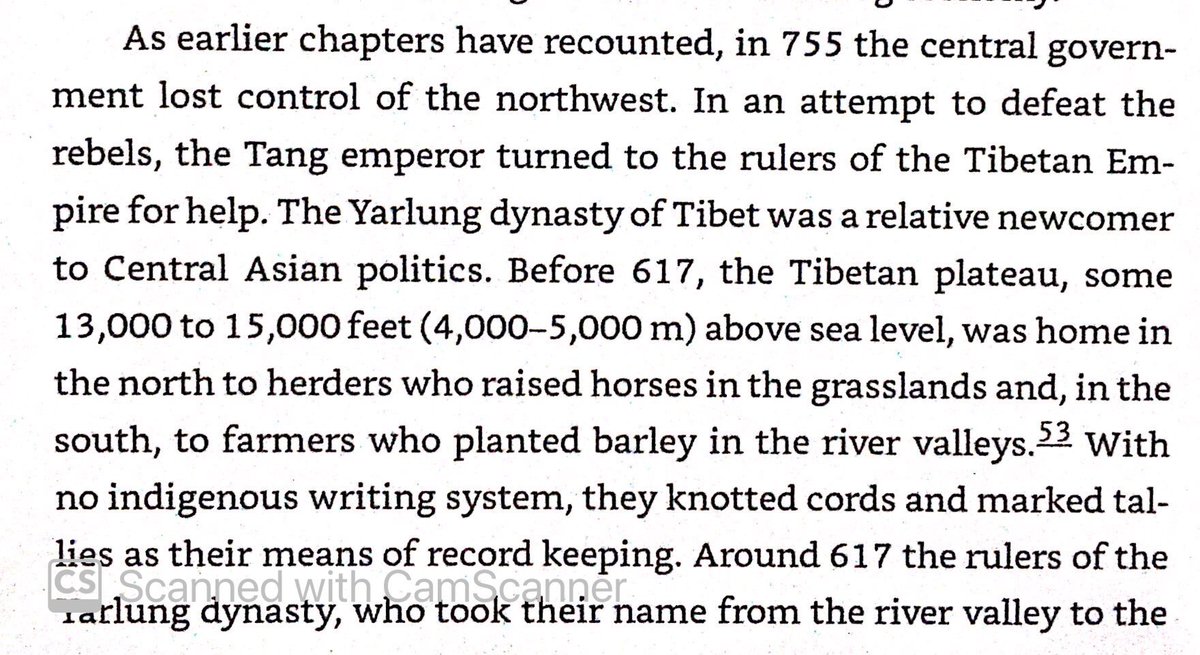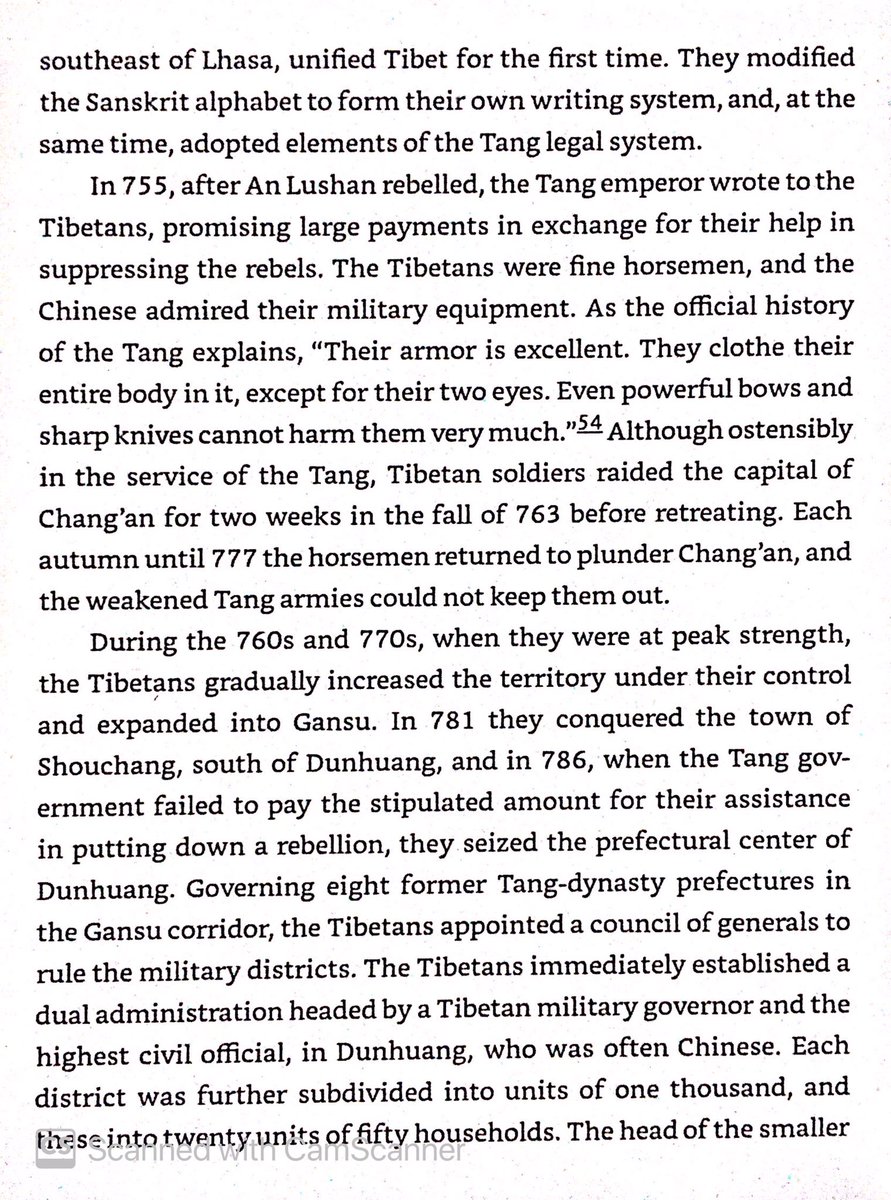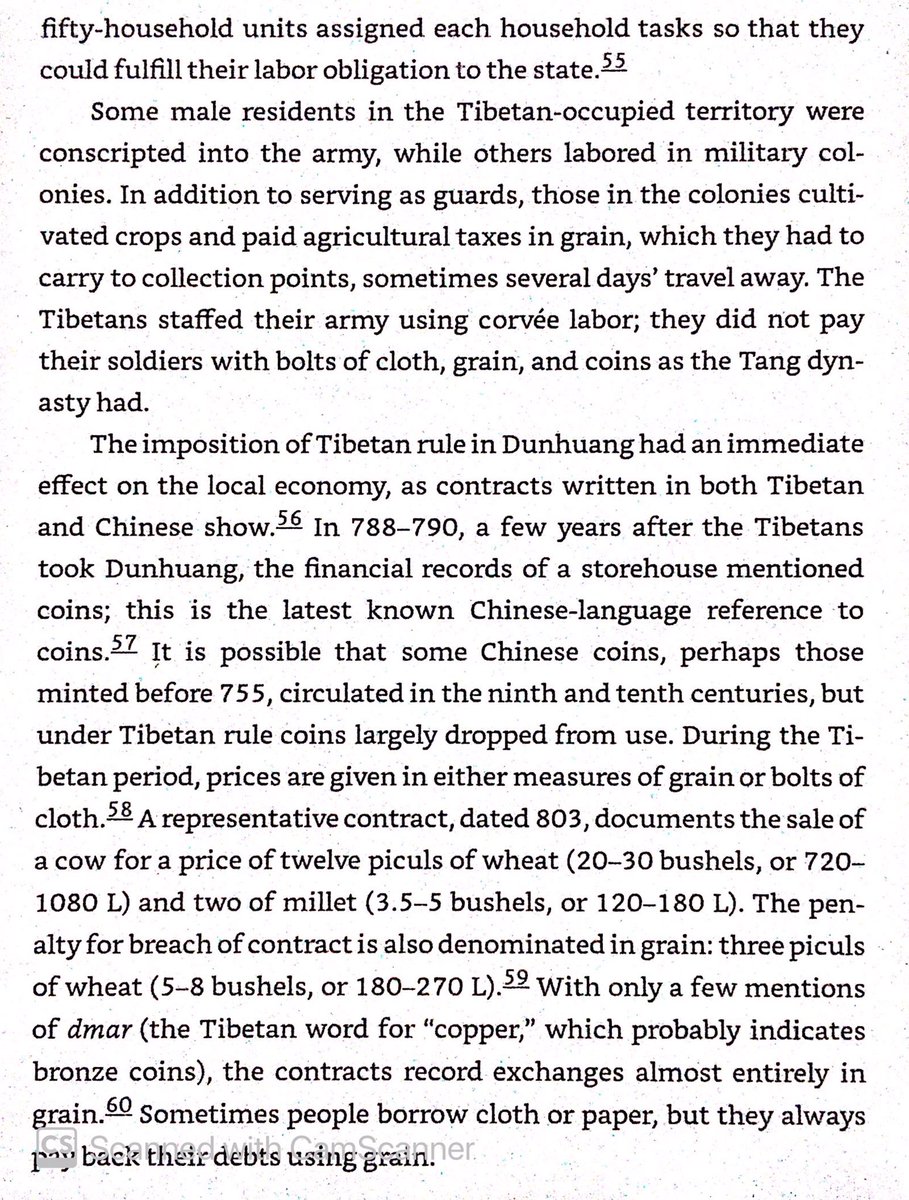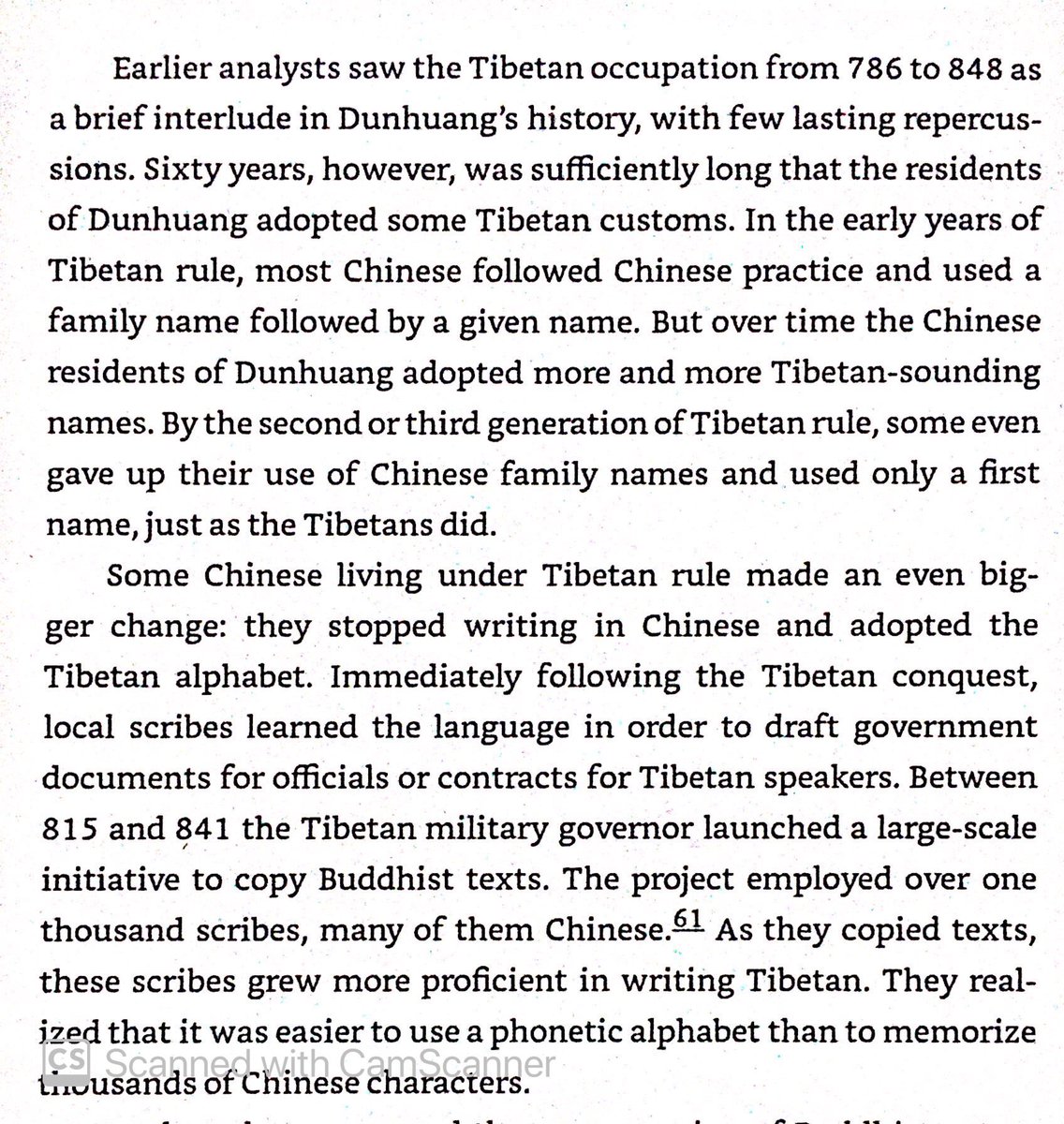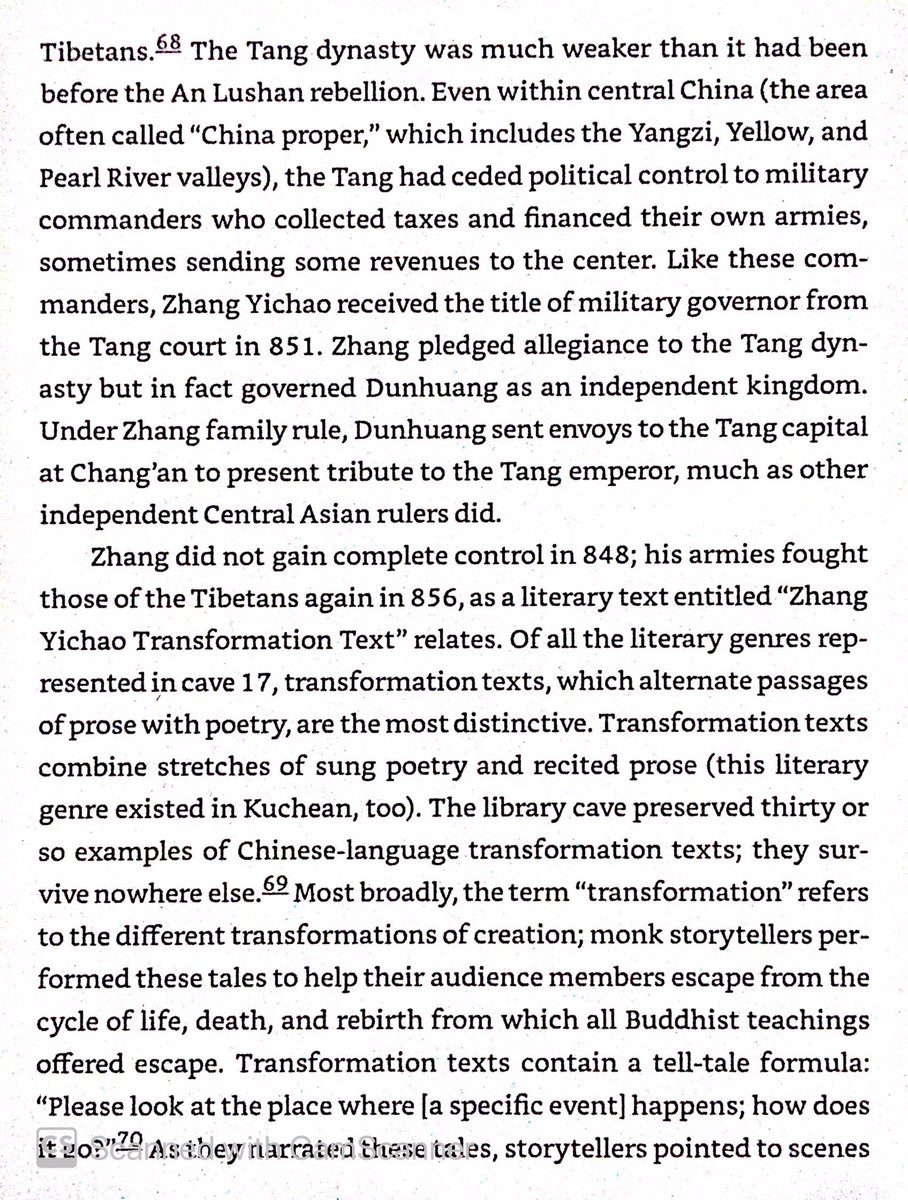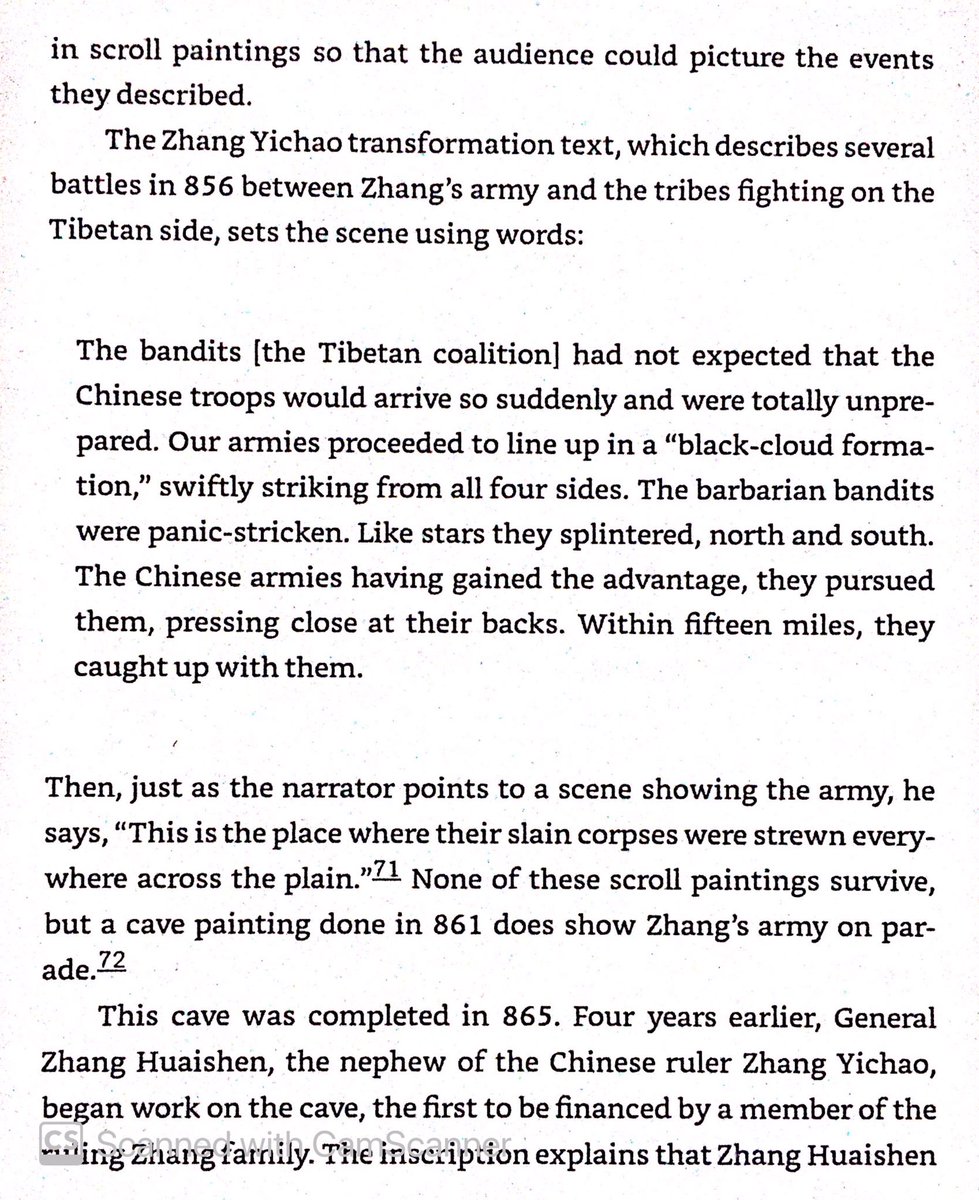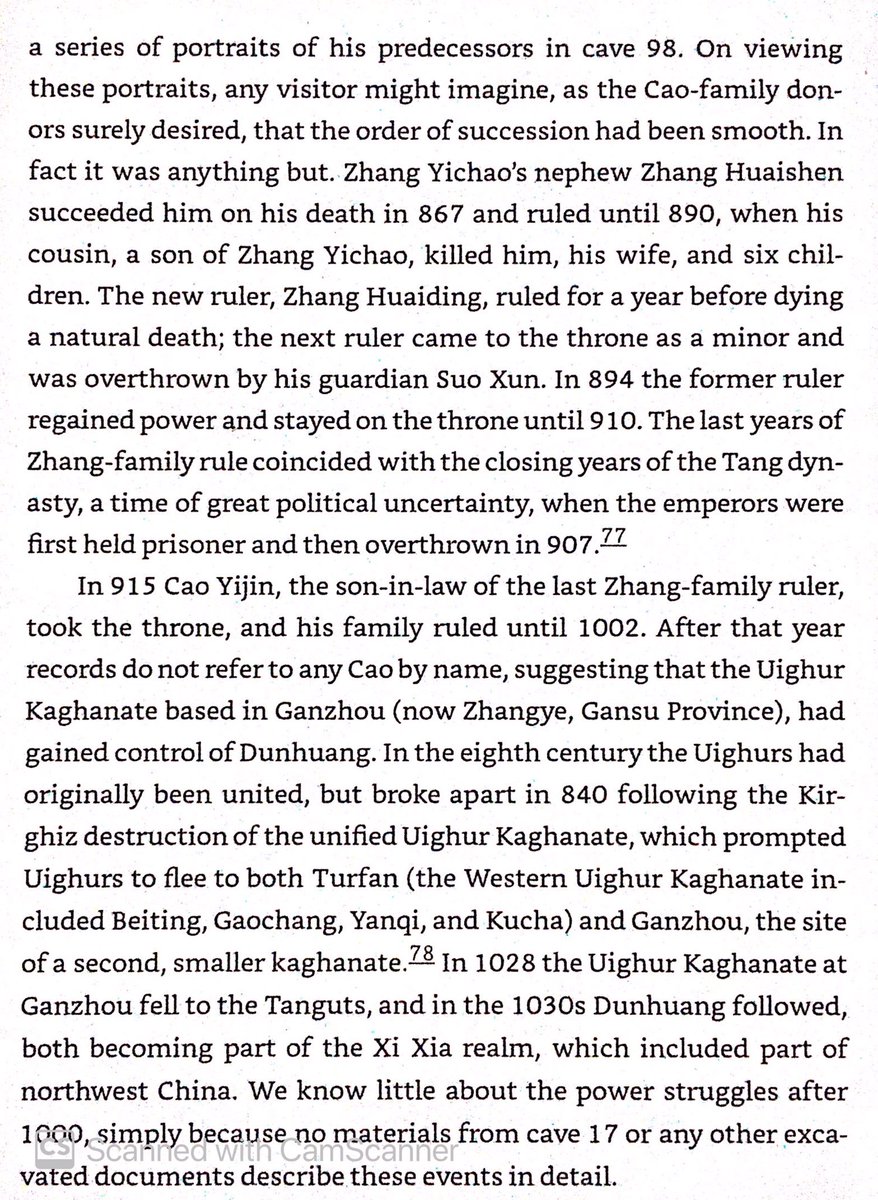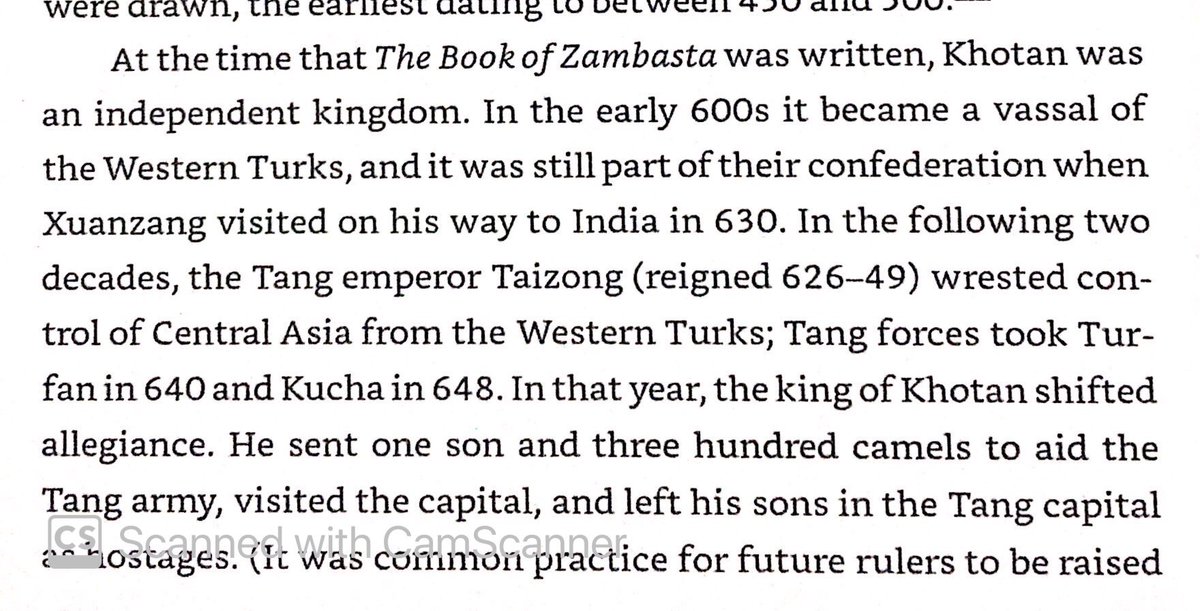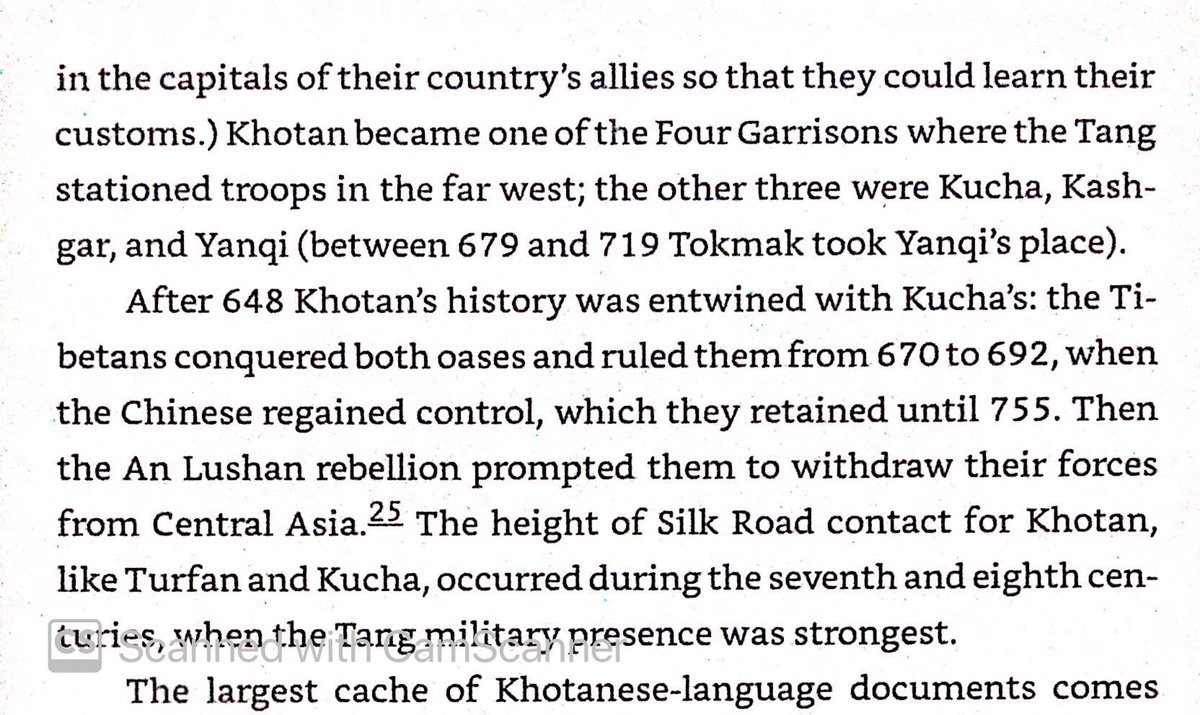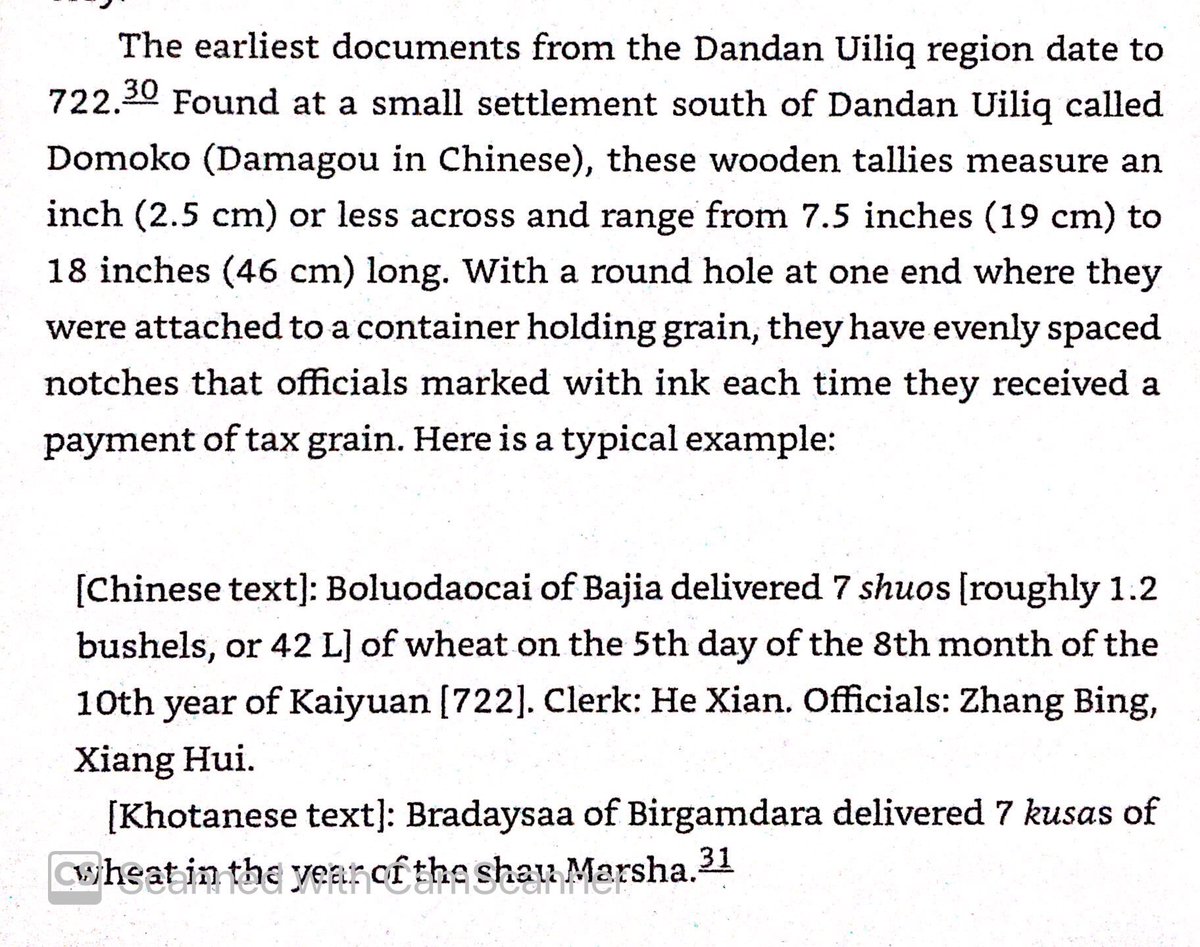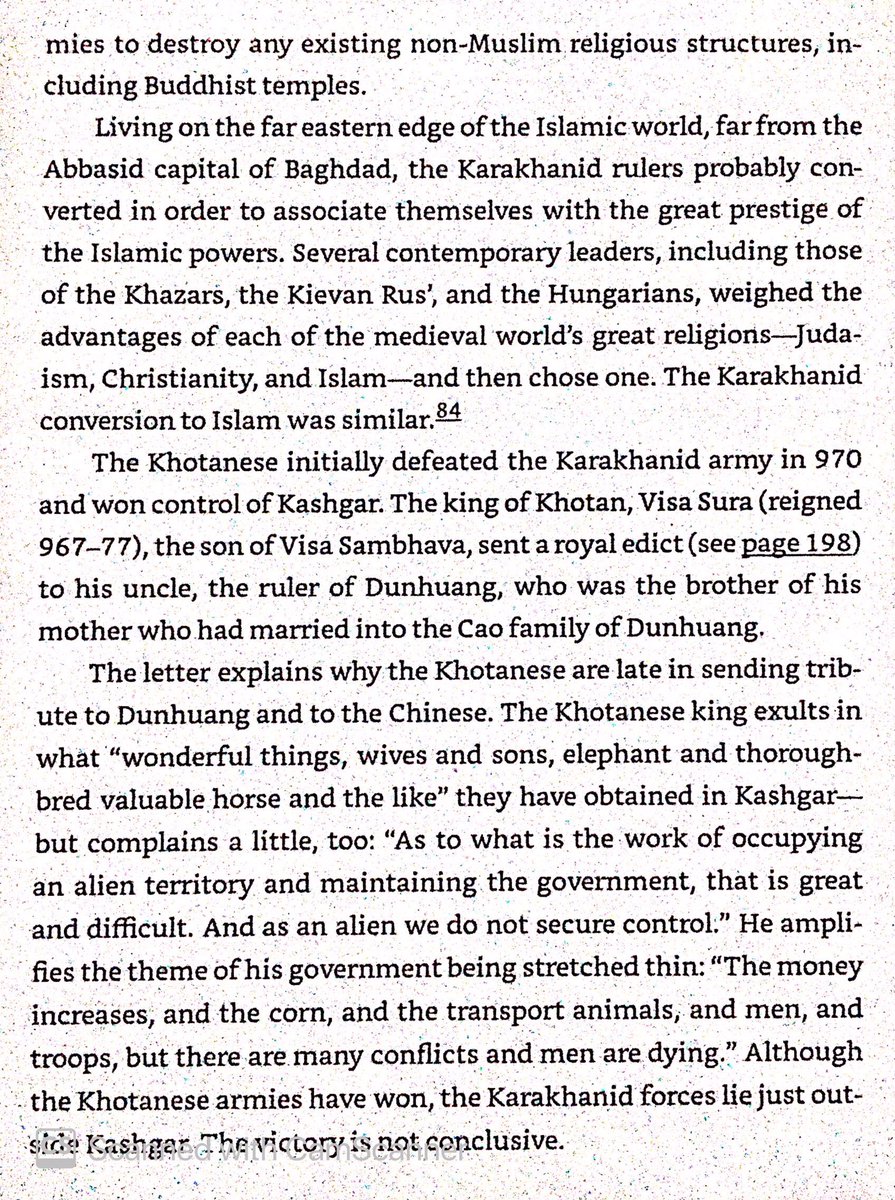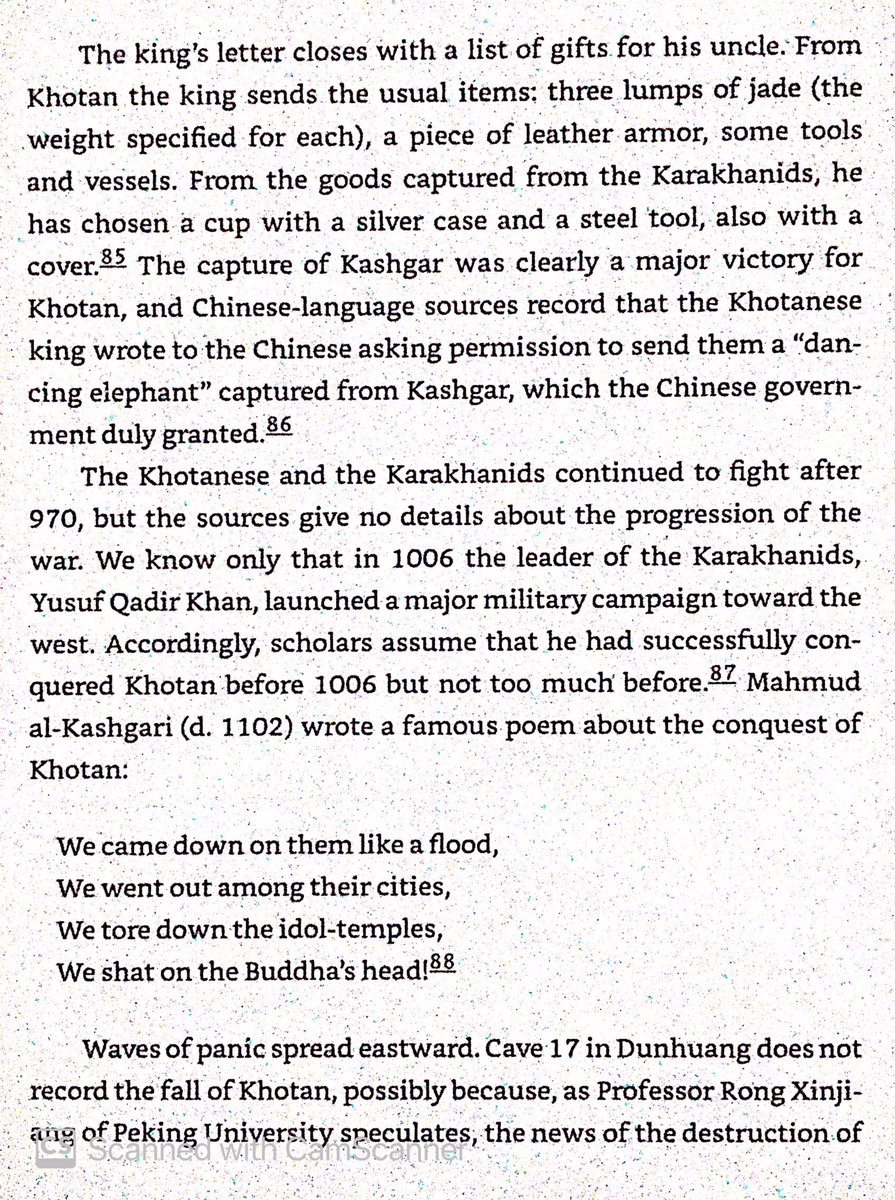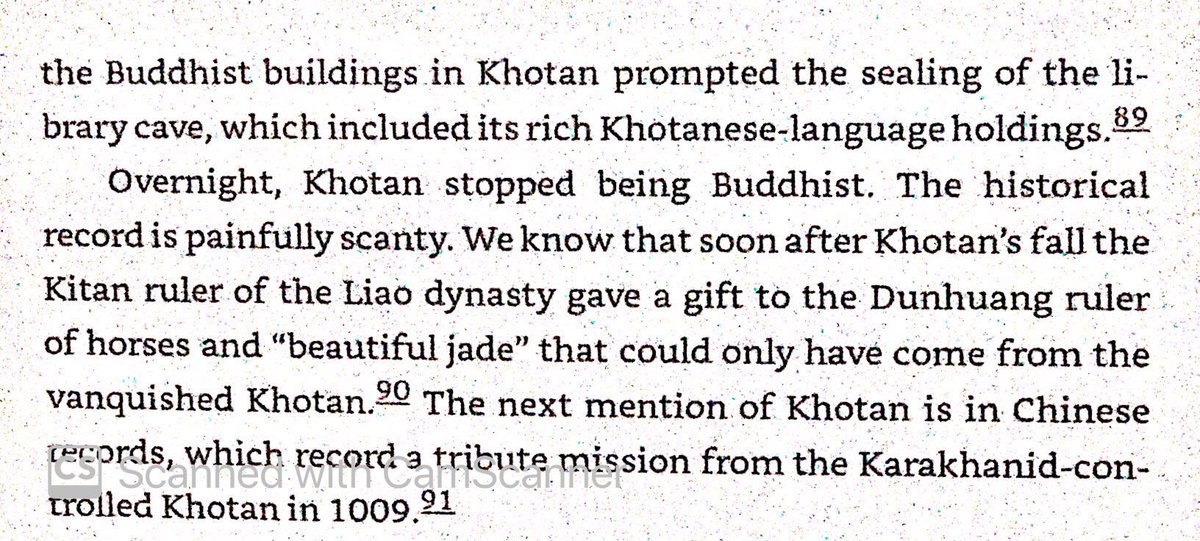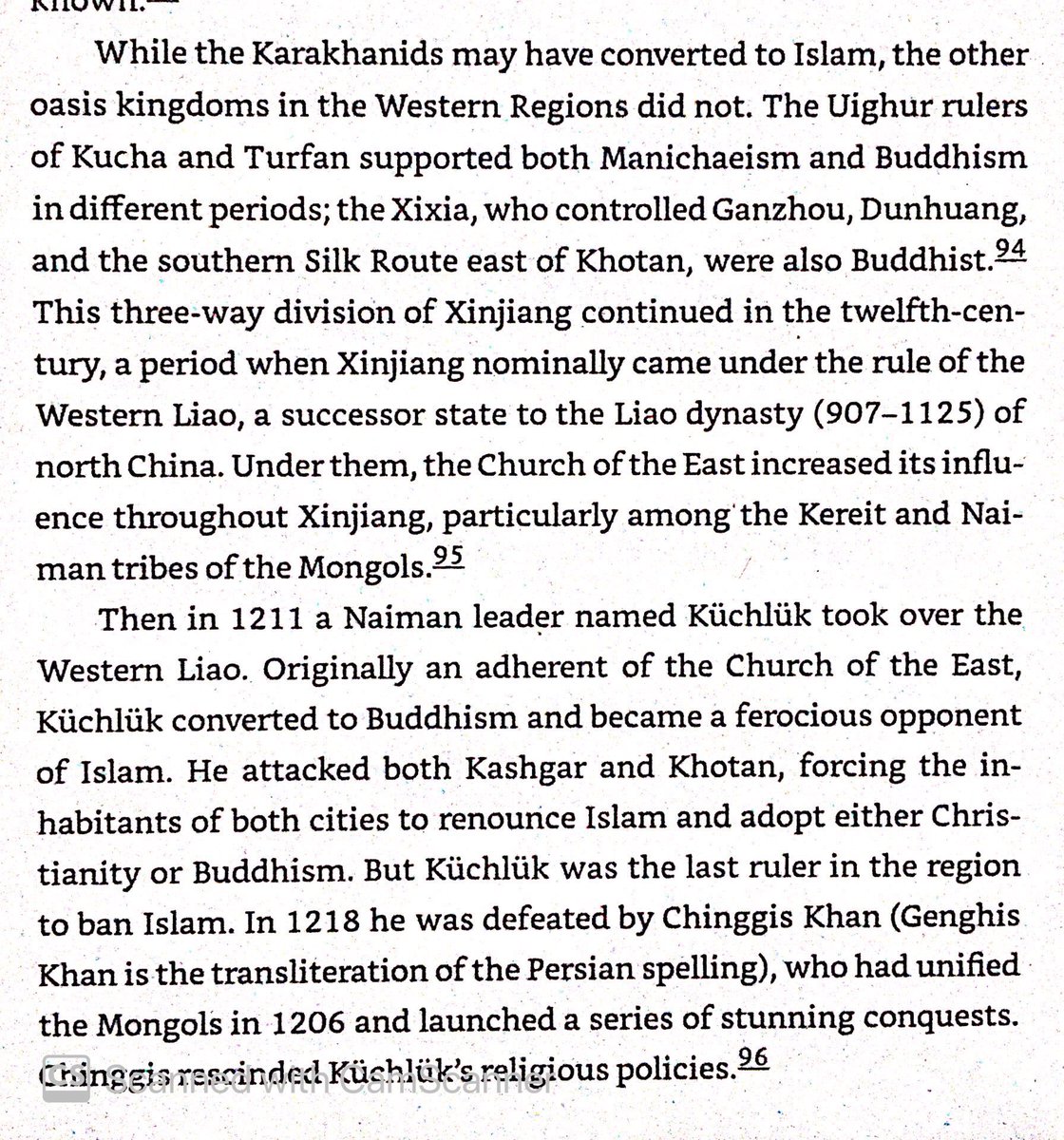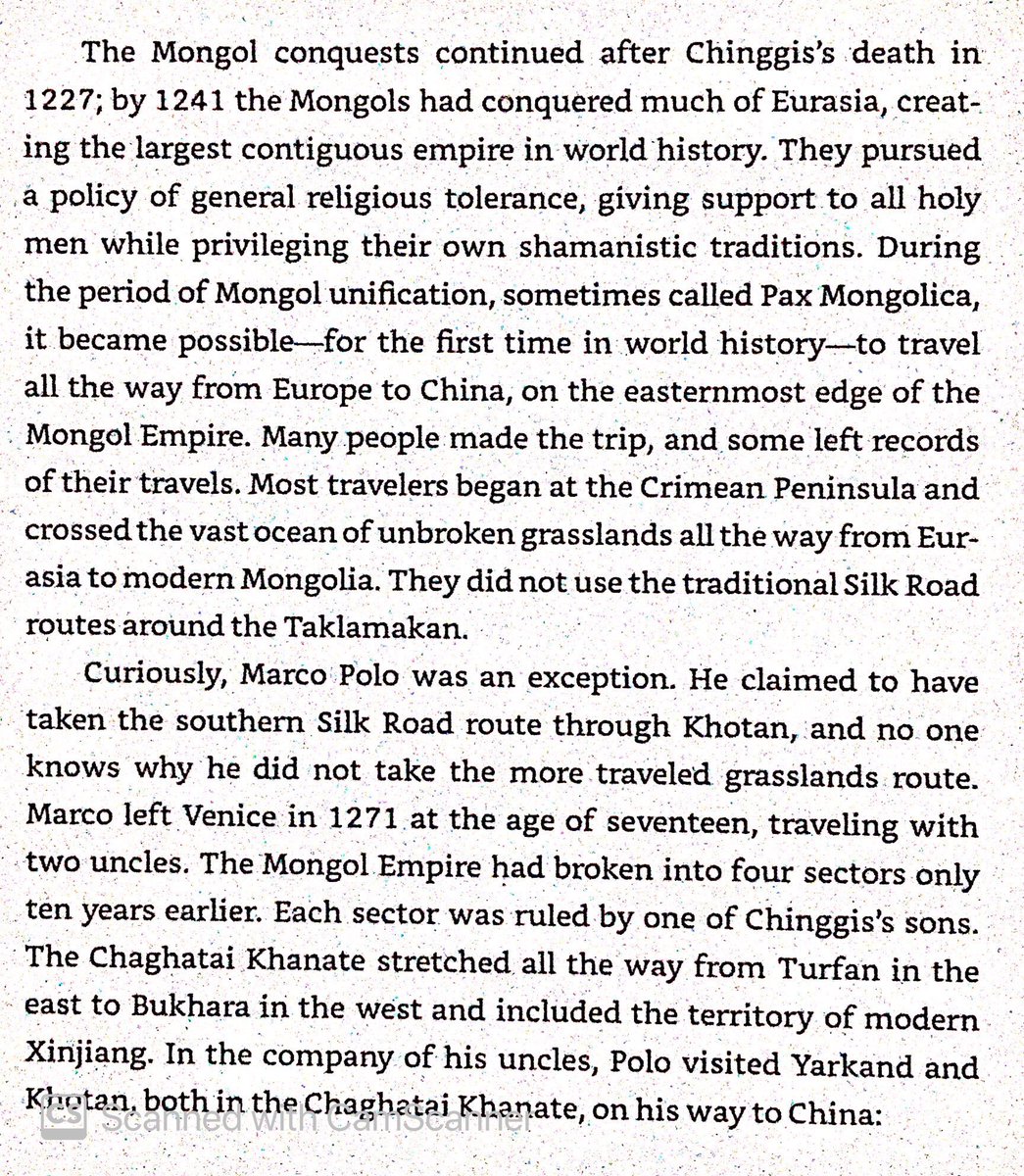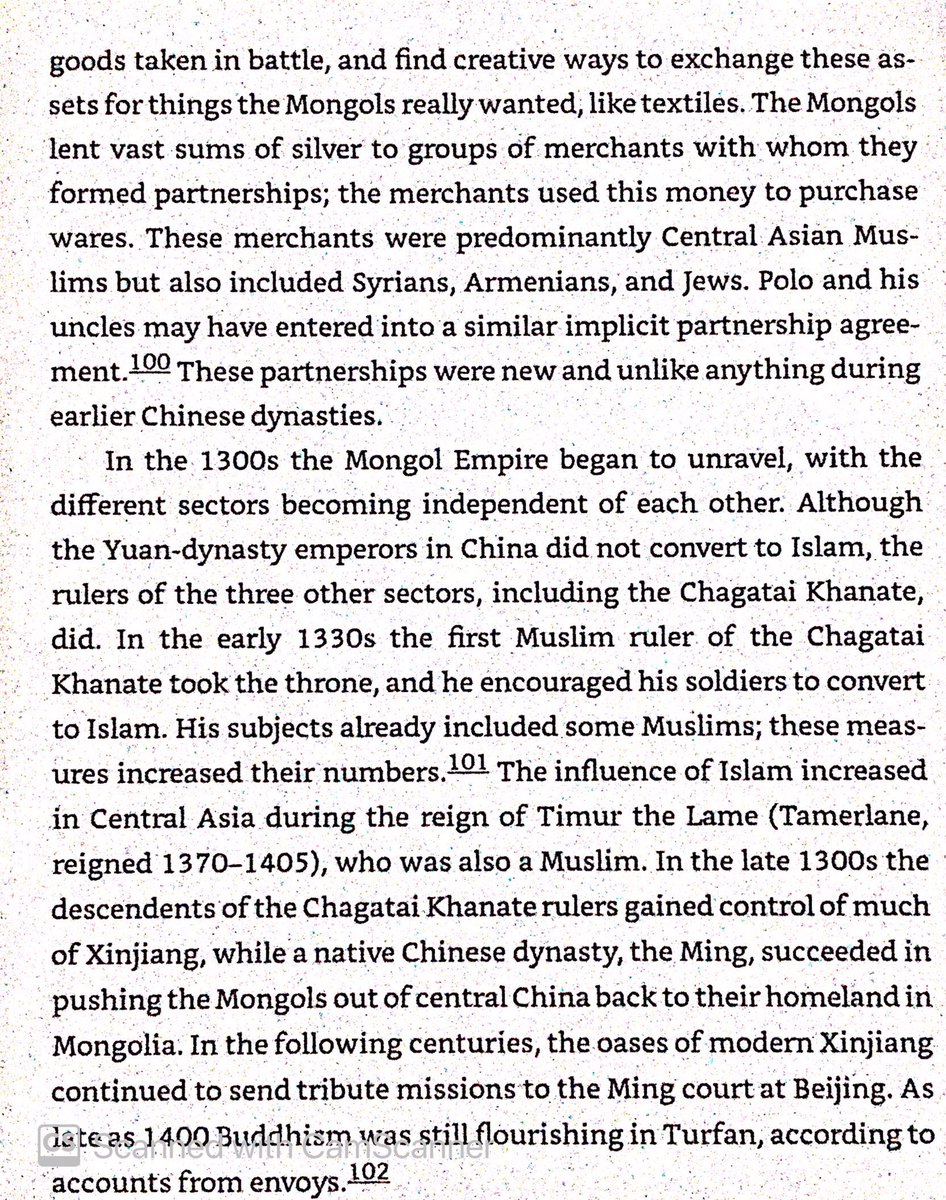Many government, trade, legal, & personal documents survive due to the reuse of paper. It was expensive, & usually used several times over.
Kingdom of Kroraina in the southeast Taklamakan Desert was a Toharian speaking state from 200-400 AD under Indian cultural & Chinese political influence
A Toharian city-state tried to play the Huns & Han off each other in the 1st & 2nd centuries BC. After aligning with Huns, the Han killed the king, renamed the state, & established a garrison.
Toharians of Kroraina constantly fought the Hotanese (closely related to Scythians) based out of southwest part of the Taklamakan Desert.
Settlements in Kroraina were mysteriously abandoned around 400 AD. The Wandering of Peoples likely had something to do with it. The southern Silk Road route around Taklamakan Desert that passed through Kroraina would be replaced by a northern route in the future.
Another Toharian people, the Kucheans, lived in an oasis on the nothern Silk Road route around the Taklamakan Desert. Rivers used to connect Kuchean lands to Indian influenced Yarkand & Hotan, making the region a Buddhist center.
The Kucheans translated many Buddhist texts into Chinese in the early 5th Century AD. These translations proved popular.
Kucheans became wealthy from trading in slaves & oil in 600s. They played the Turks & Chinese off one another, paying tribute to both.
Tang conquered Kucheans in 648. Tang & Tibet warred over Kucheans in 670, with Tang reconquering Kucheans 22 years later. An Lushan Rebellion weakened Tang, with a weakened & isolated Chinese garrison, Anxi Protectorate, succumbing to Tibetan invasion.
Turfan was another Toharian city on the northern Silk Road route. It became mostly Chinese in 3rd century from waves of refugees fleeing collapse of Han Dynasty, & later had a large Sogdian population.
Tang conquered Turfan 8 years before they conquered Kucheans. Chinese recorded 38k residents in 640 AD. Turfan was governed as an ordinary prefecture.
Sogdians settled in Turfan as early as 300s, but immigrated in vast numbers after Islamic Conquests in Iran & C Asia 651-712. Sogdians dominated the Silk Road trade, accounting for 85% of known merchants even before the Islamic Conquests.
An Lushan was half Sogdian half Turk who rebelled against Tang in 755. Tang hired Uyghur mercenaries to recover western regions for them. Uyghurs & Tibetans warred over the region for decades, with Uyghurs keeping Turfan.
The Uyghurs converted to Manichaeism under Sogdian influence in mid 8th century, & converted to Buddhism around 1000.
Silk Road mostly a byproduct of Chinese government spending. When they left, the region reverted to subsistence.
Zoroastrian Sogdians in China & Sogdiana remained polytheists even as their religious brethren in Iran became monotheists.
Despite conquest by White Huns in 509 & Turks in 565, Sogdian culture & language predominated in Sogdiana & spread across Central Asia. They were the richest realm in the region in 6th & 7th centuries.
Moslems invaded Sogdiana in 705. They warred on & off for decades, with shifting coalitions involving the Chinese, Turks, & other Sogdian city states. The Moslems won in the end.
By the late 6th century, Chinese would appoint a foreigner to administer their own ethnic neighborhood.
Chang’an (now Xi’an) was the great city of the west of core China. It had a population of almost a million, including many foreigners. Numerous Iranian & Sogdian refugees fleeing Islam settled there, including son & grandson of last Sassanid Shah Yazdegerd III.
An Lushan Rebellion led Tang Dynasty to devolve much power to regional governors. Sogdians & large nosed people were massacred after the rebel defeat, & one group of Sogdians was exterminated. Survivors were renamed, as were many streets & gates with Sogdian connotations.
China banned Buddhism, Christianity, Manichaeism, & Zoroastrianism in the 840s. Buddhism was legalized again several years later, but not the others.
Sailors figured out the China->India sea route by 1st century AD. It was comprised of several shorter sea routes which were gradually figured out & combined. It was a difficult voyage, & involved a stay in Sumatra for several months.
Sea trade to China became increasingly popular from late 7th to mid 9th century. Arabs played a major role in this trade, but were largely exterminated in Huang Chao Rebellion with other foreigners. The sea trade declined after this, & weakened Tang Dynasty fell in 907.
Tibet unified in 617. As Tang declined, they gained more power, seizing parts of Gansu in late 8th century. Despite only ruling for 62 years, the Tibetans had a lasting cultural impact - phonetic alphabet (inspired by Indians) & end of money economy. Prices were in grain.
A Chinese general reconquered Gansu in 848 in name of Tang, but he was independent of the weak dynasty. He spent years successfully warring with Tibet. He was succeeded by various blood & marriage relations until the Uyghurs invaded Gansu in 1002.
Kingdom of Hotan was independent Iranian state with heavy Indian & Buddhist influence in SW Xinjiang. W Turks, Tang, & Tibet fought over it in 7th century. Tang won in the end, but withdrew in 755 due to An Lushan Rebellion.
Bilingual record keeping & tax collecting in Hotan - Chinese & Hotanese (E Iranian language with heavy Prakit influence). Hotan had a well developed legal system administered by village assemblies.
Uyghurs were defeated by Kirgiz in 840, sending refugees south to Turfan & Gansu. New Turkic confederacy, Karkhanids formed by 955 & adopted Islam. They fought Hotan for decades, finally winning by 1006 & destroying Buddhism temples in the region.
Western Liao Dynasty was strongly anti-Islamic & tried to force Kashgar & Hotan to renounce Islam in early 13th century. Genghis Khan destroyed them & stopped the religious persecution.
After Genghis Khan’s conquests, the Eurasian land trade route shifted north to the steppe, bypassing the traditional Silk Road around the Taklamakan Desert.
Mongols mostly used Central Asian Moslems as merchants & bankers, but Syrians, Armenians, & (Buharan?) Jews as well. Chagatai Khanate & Timur the Lame promoted Islam in 14th century in Xinjiang.
Overall the book is worthwhile if you are interested in the region. Few others discuss Toharians, Uyghurs, Sogdians, & Hotanese. Author spends a lot of time on the evidence & archaeology rather than a narrative, so you can draw your own conclusions.

 Read on Twitter
Read on Twitter

